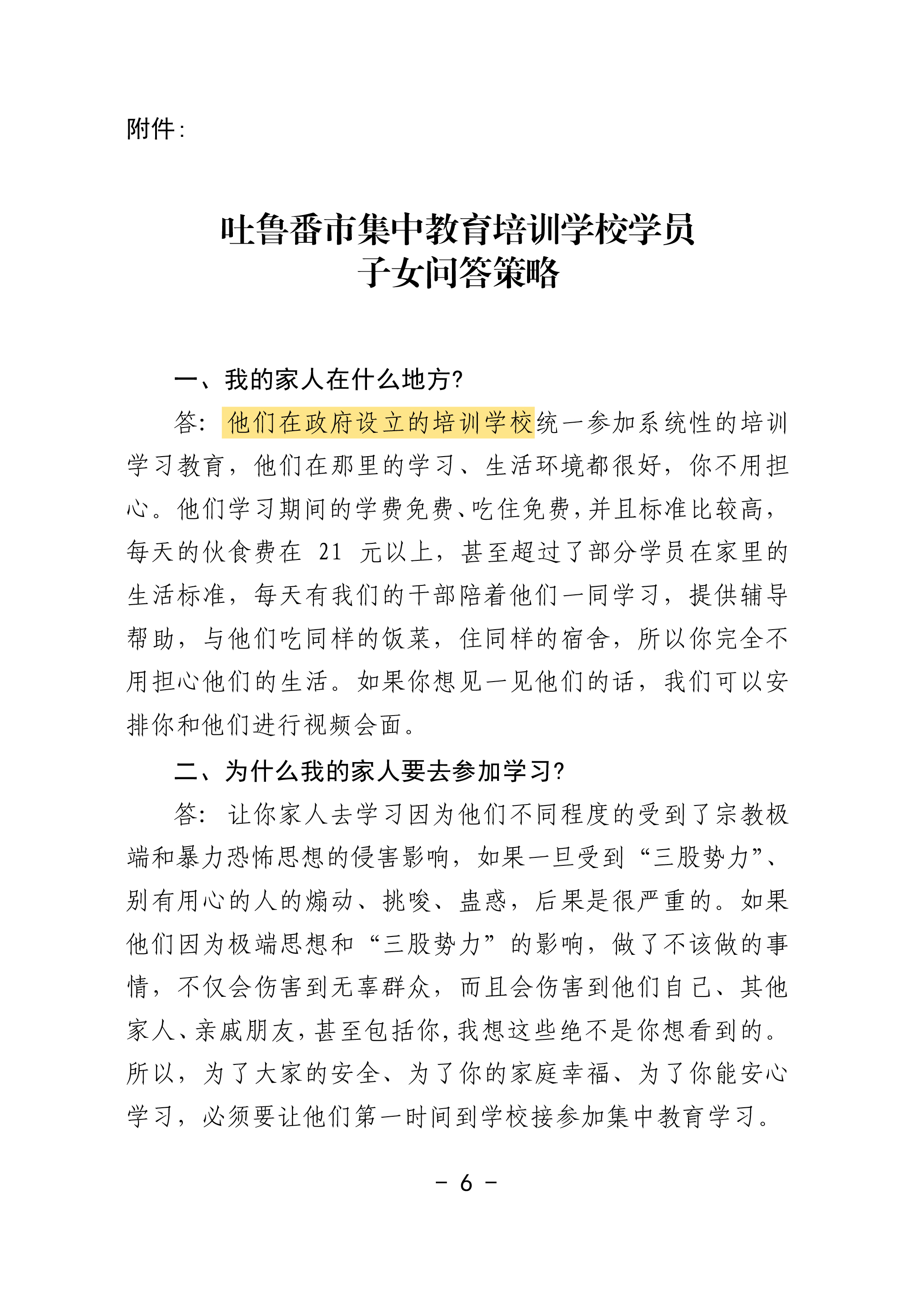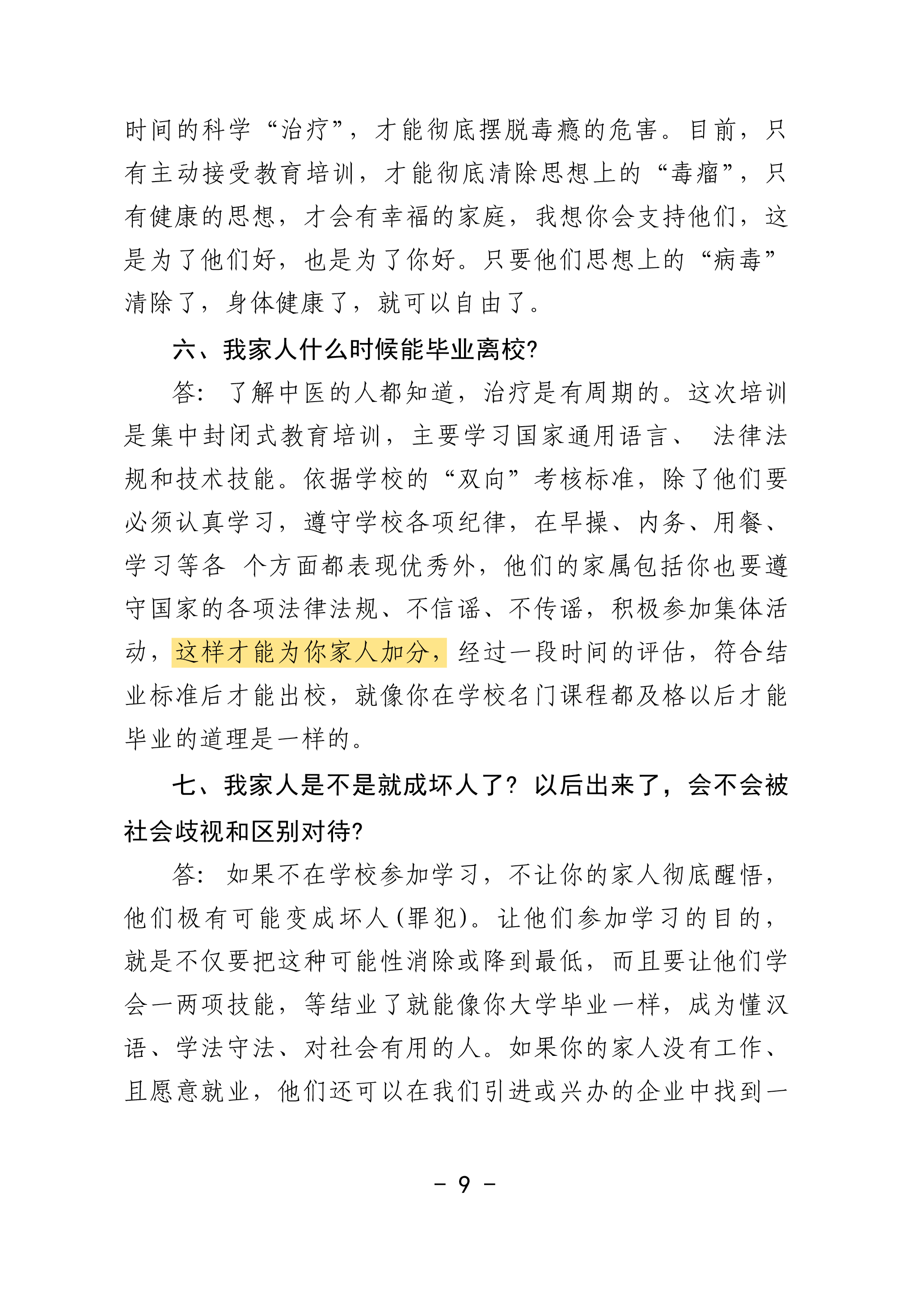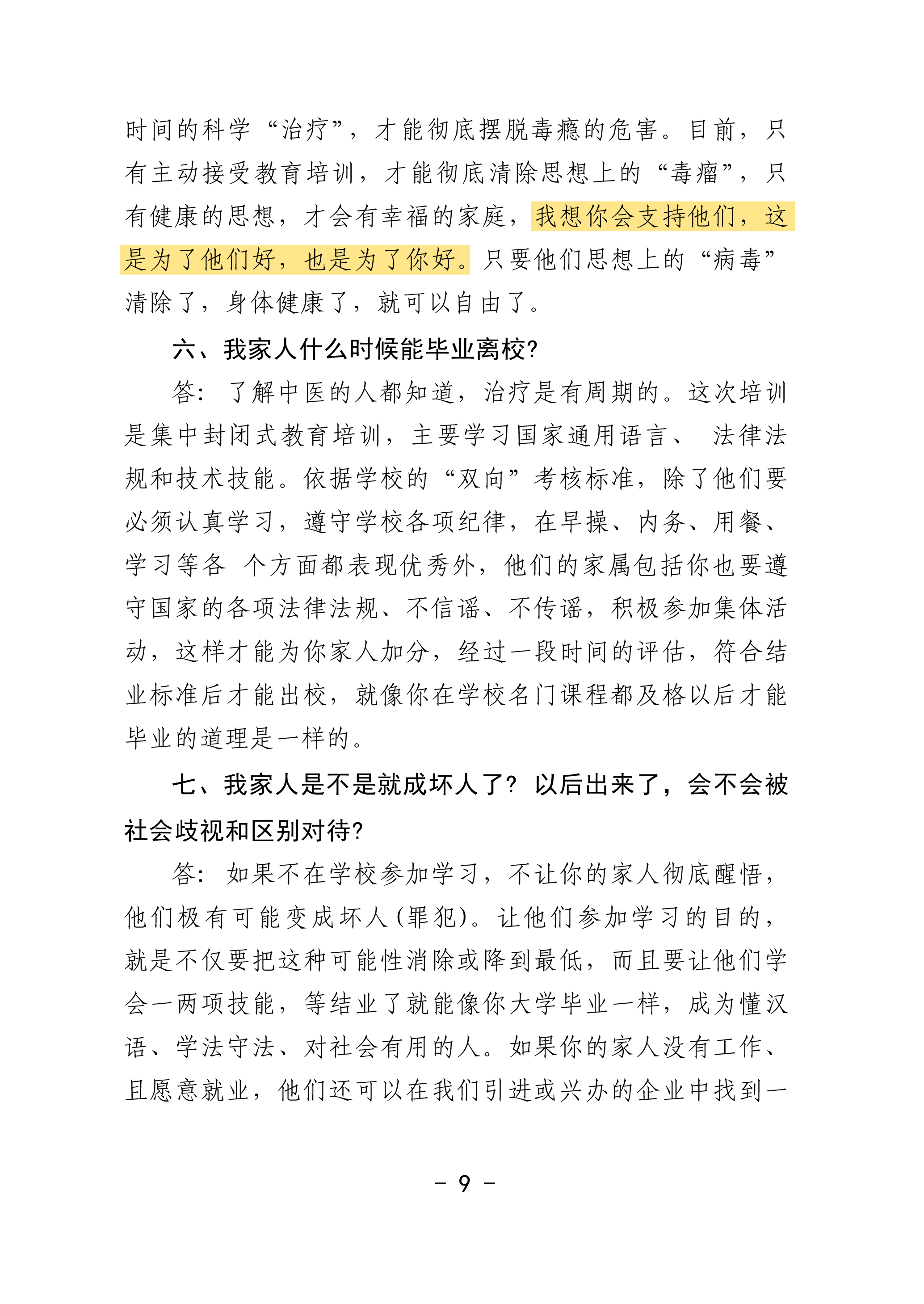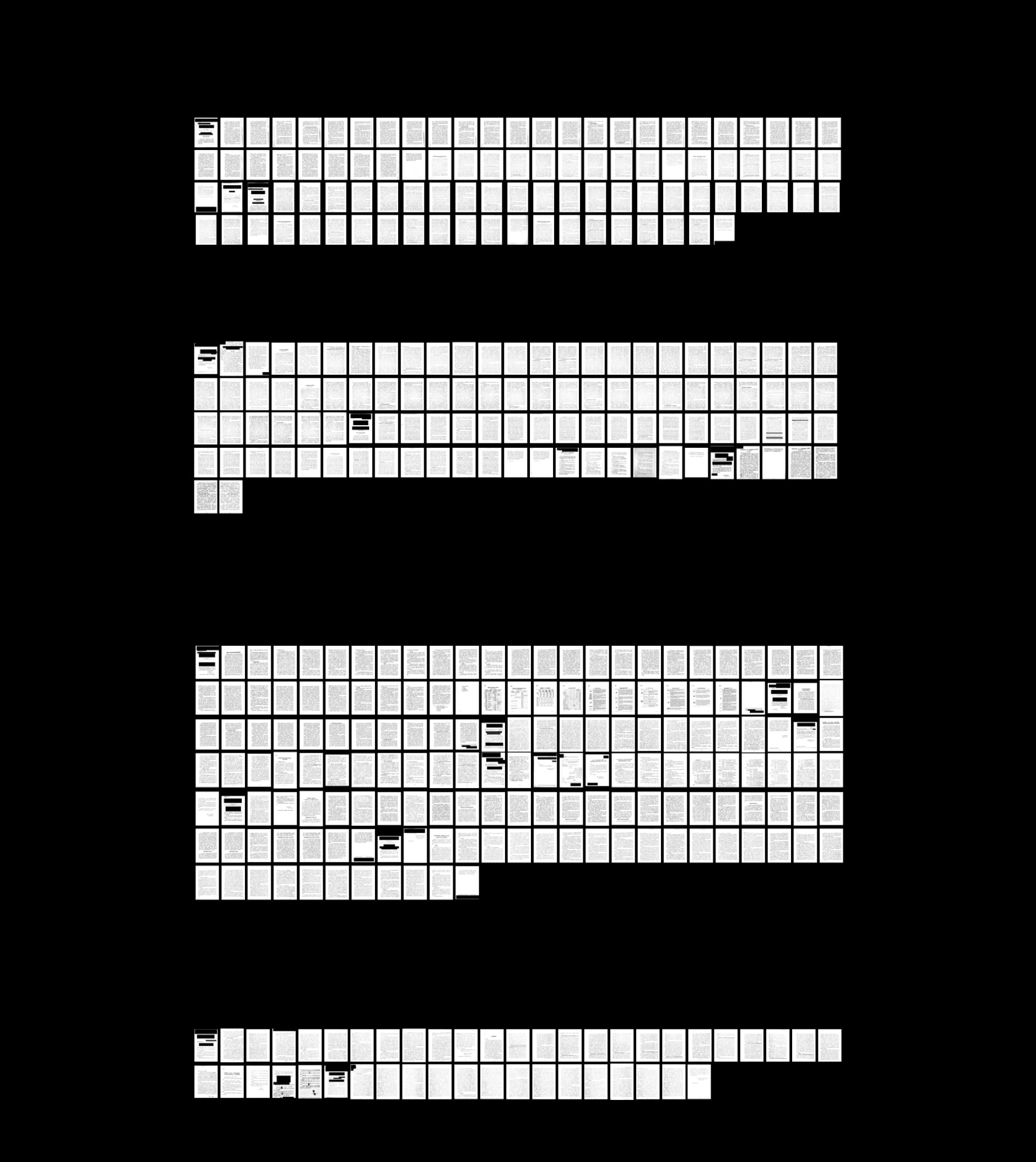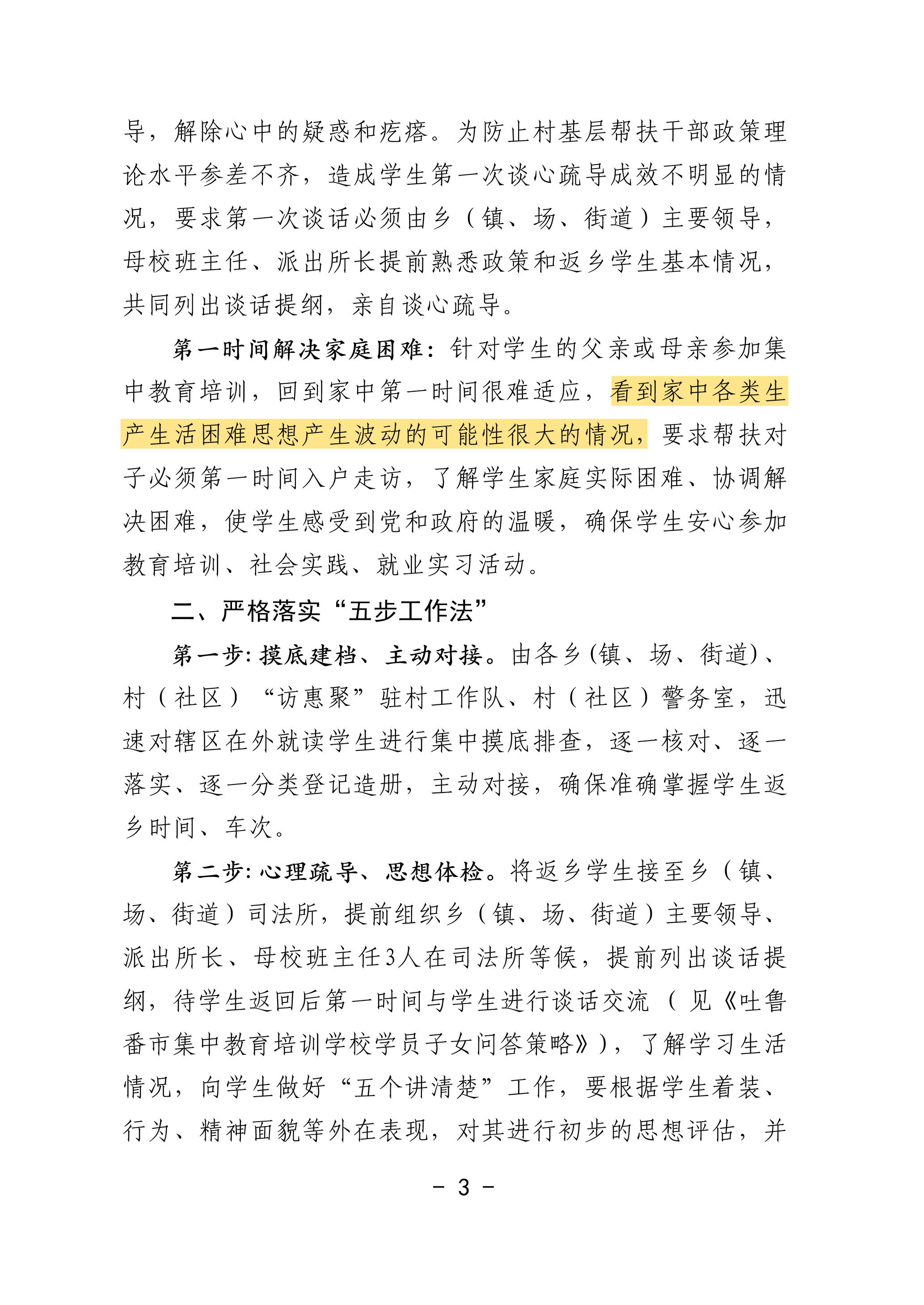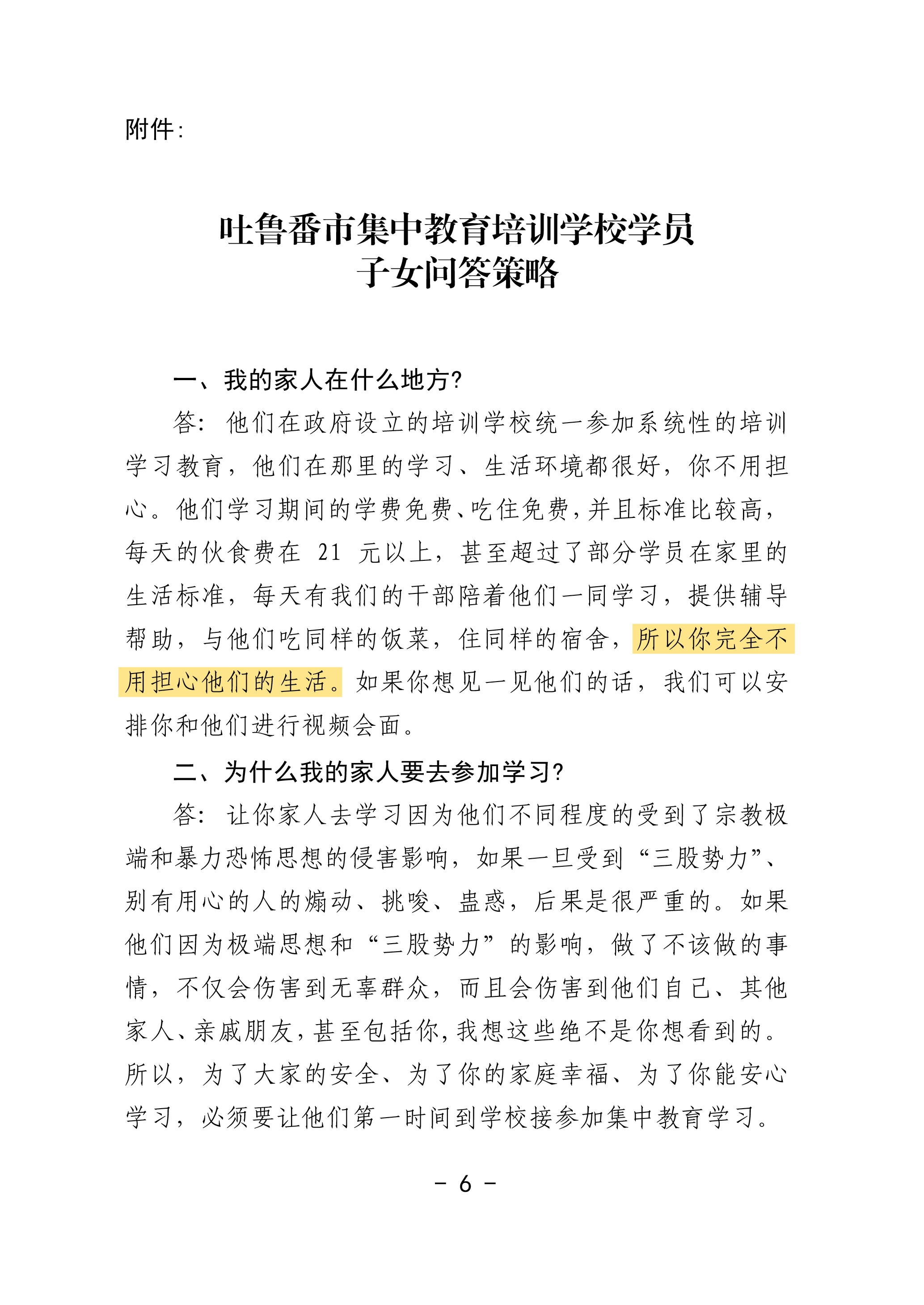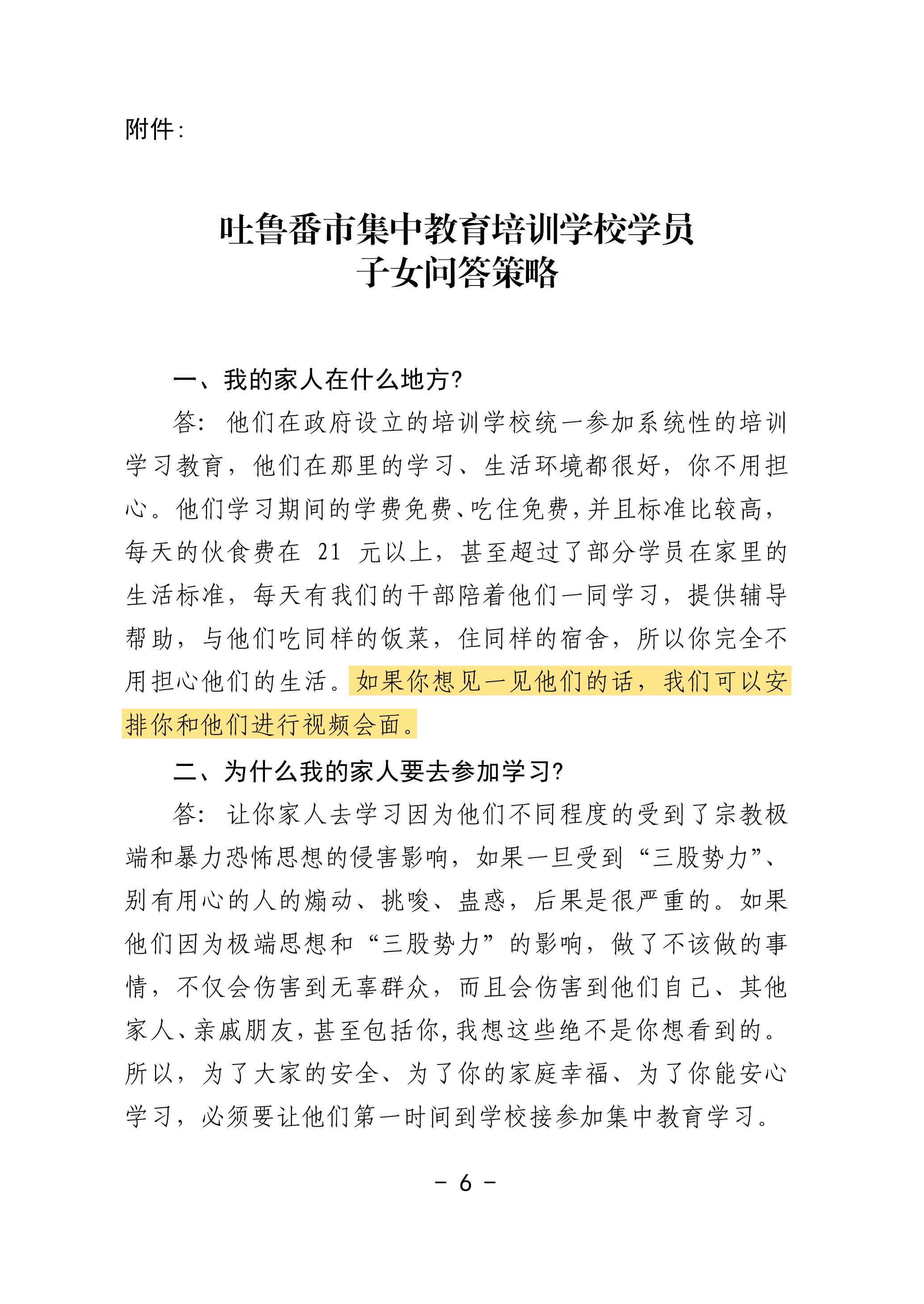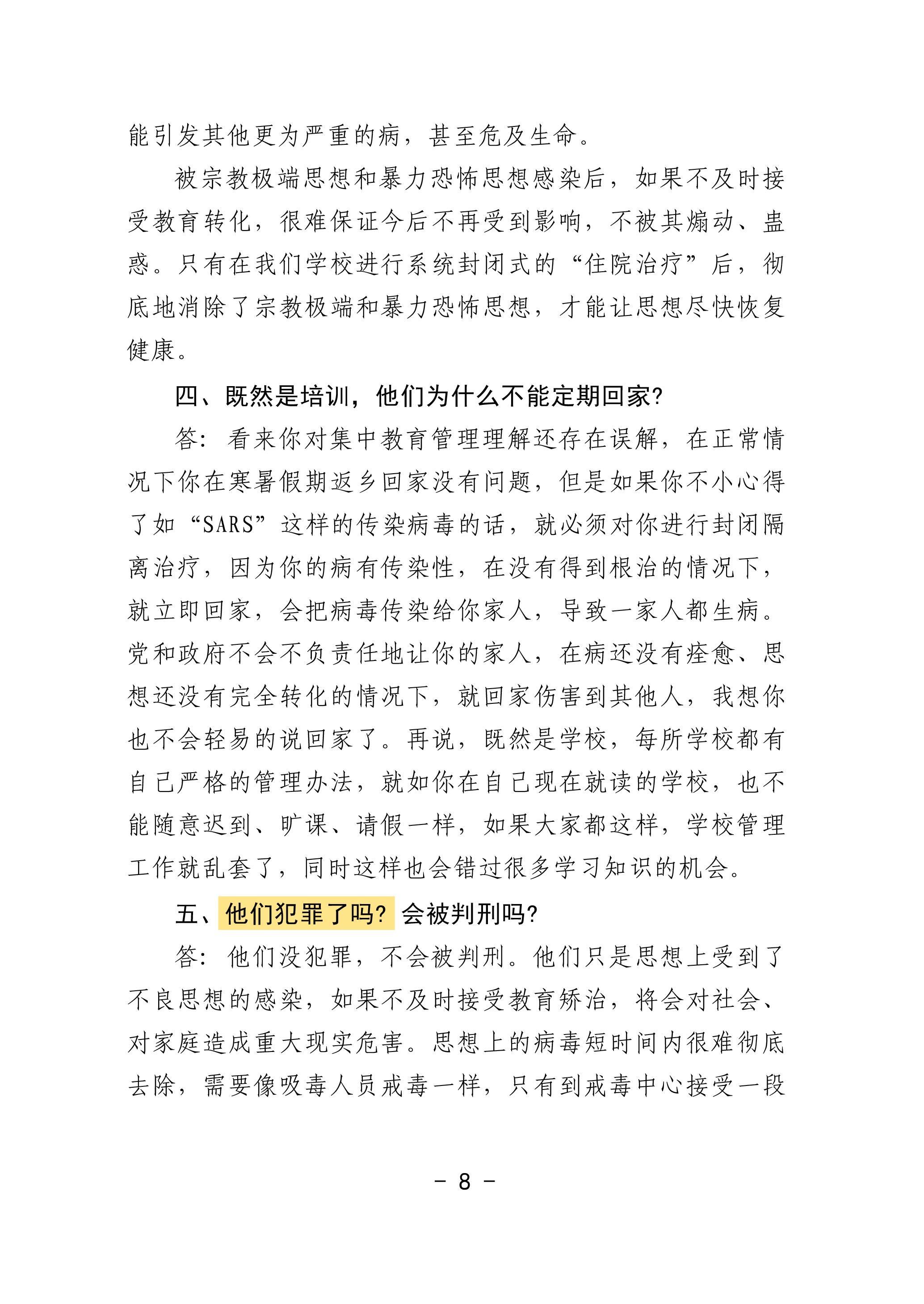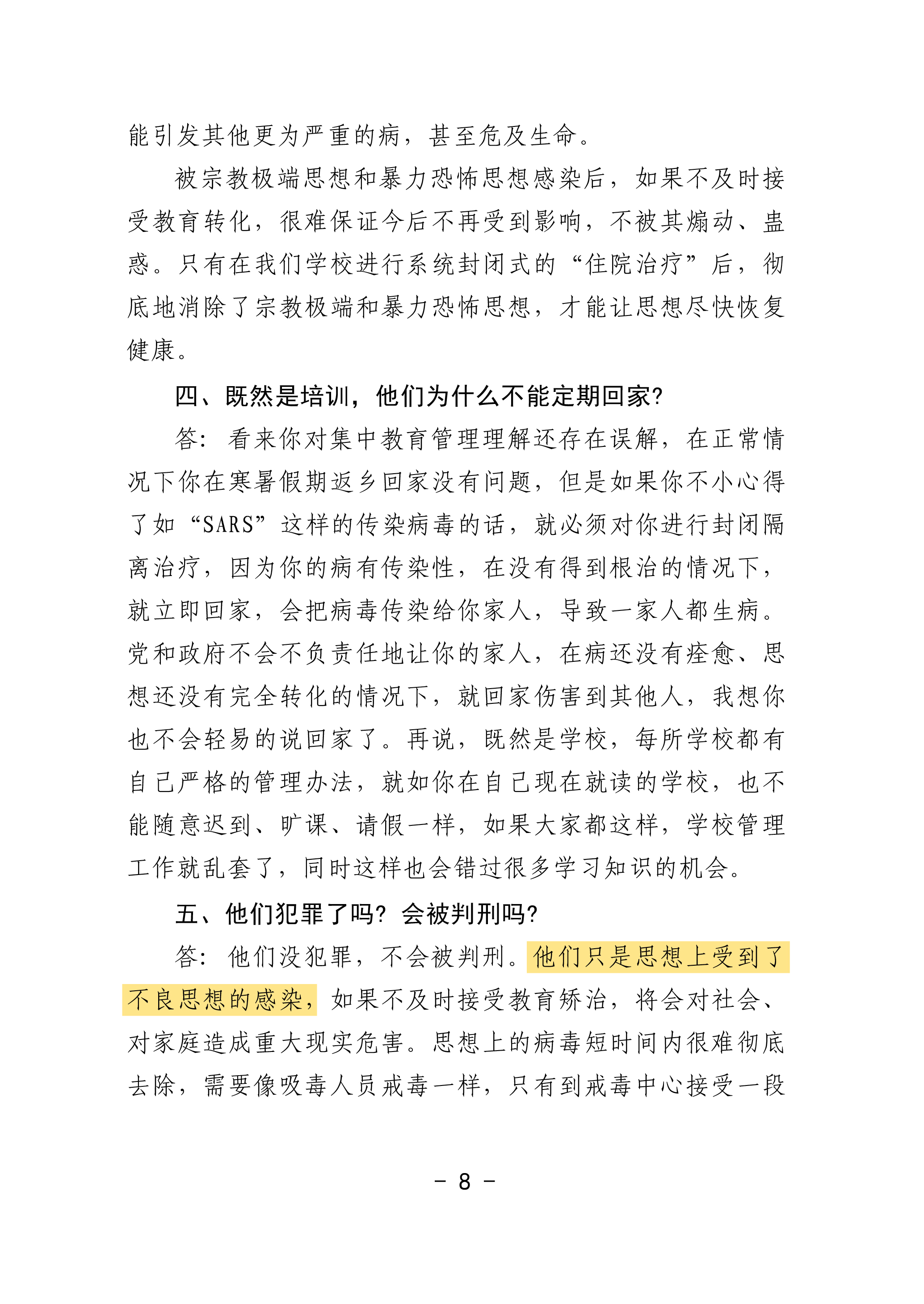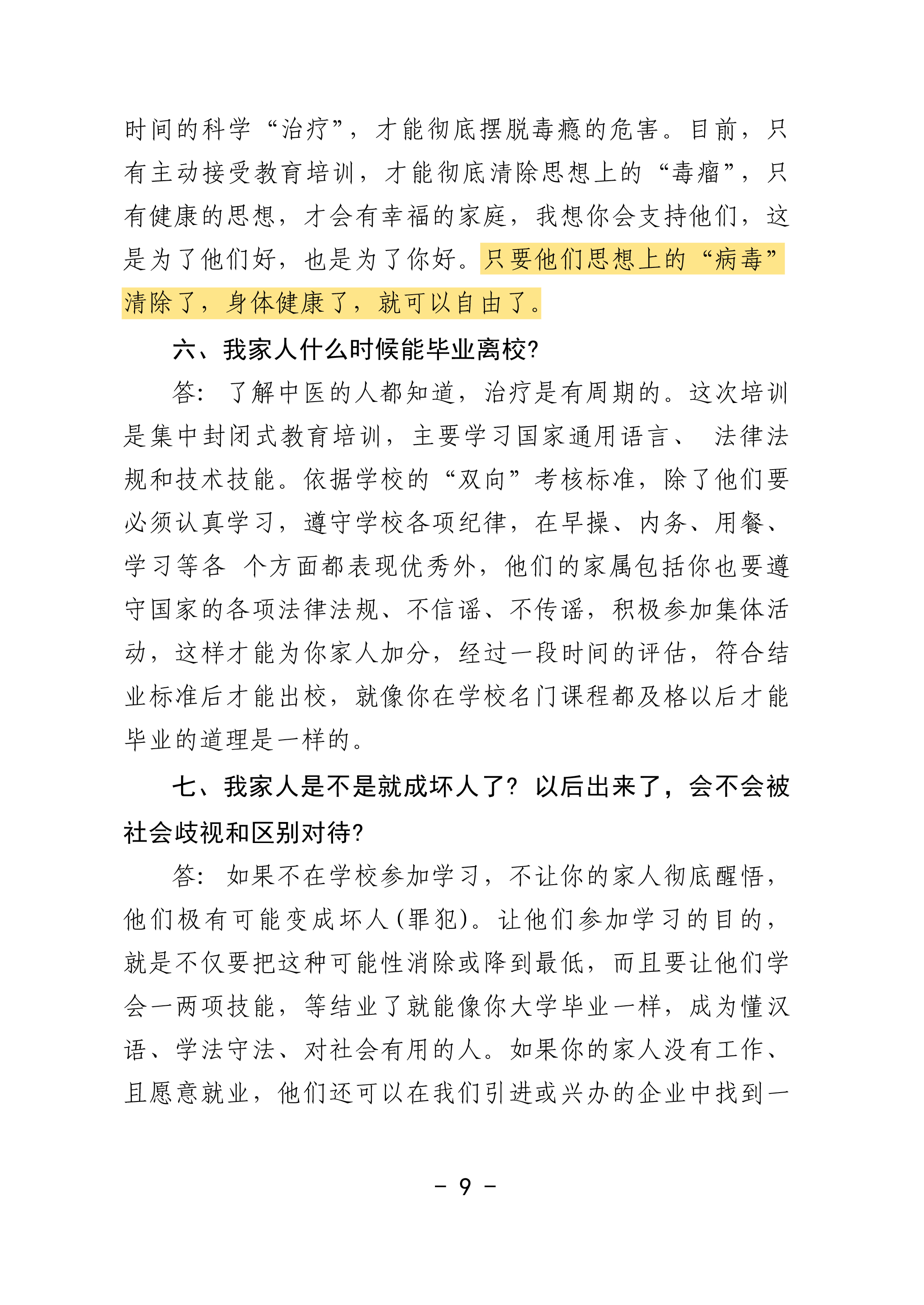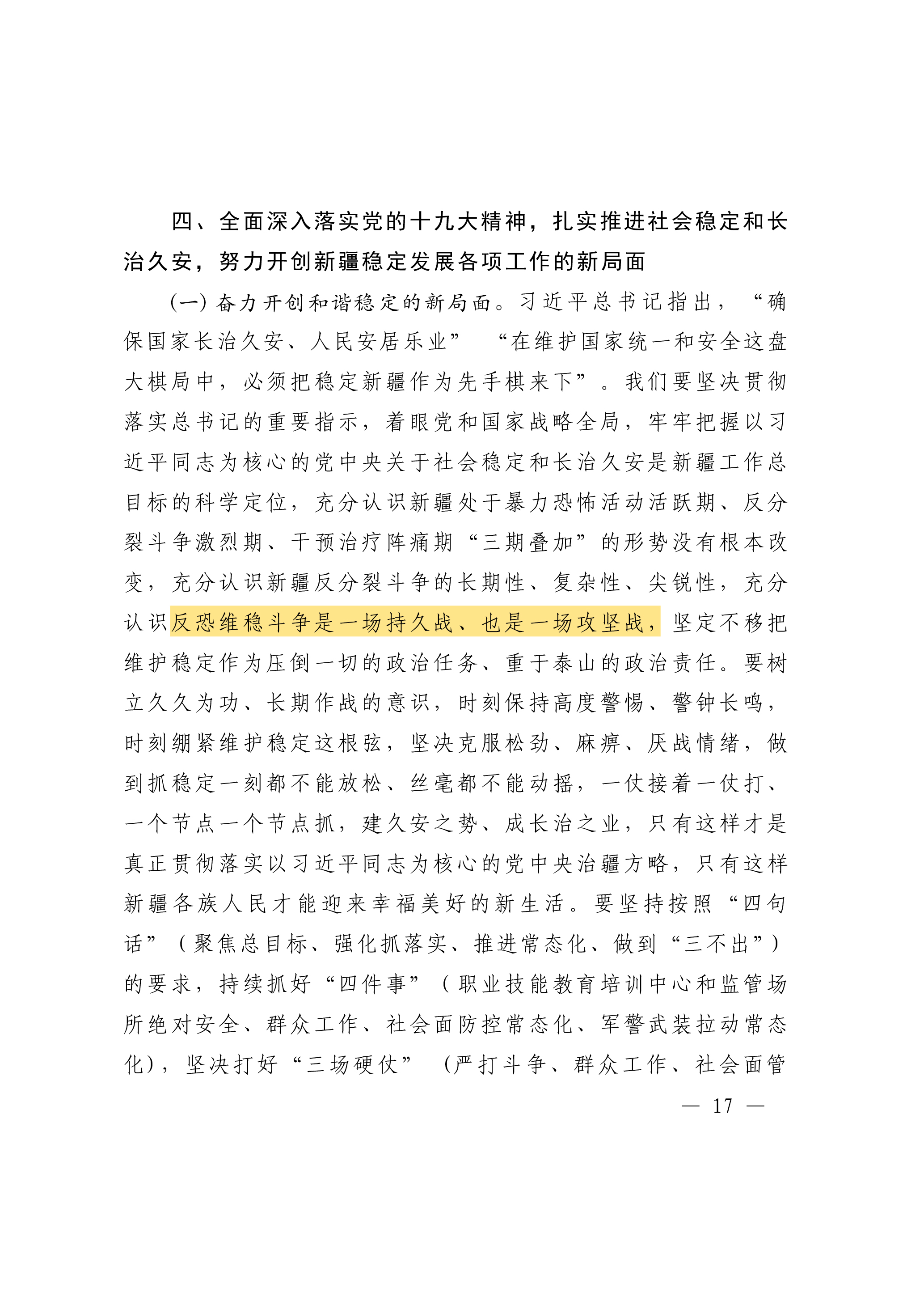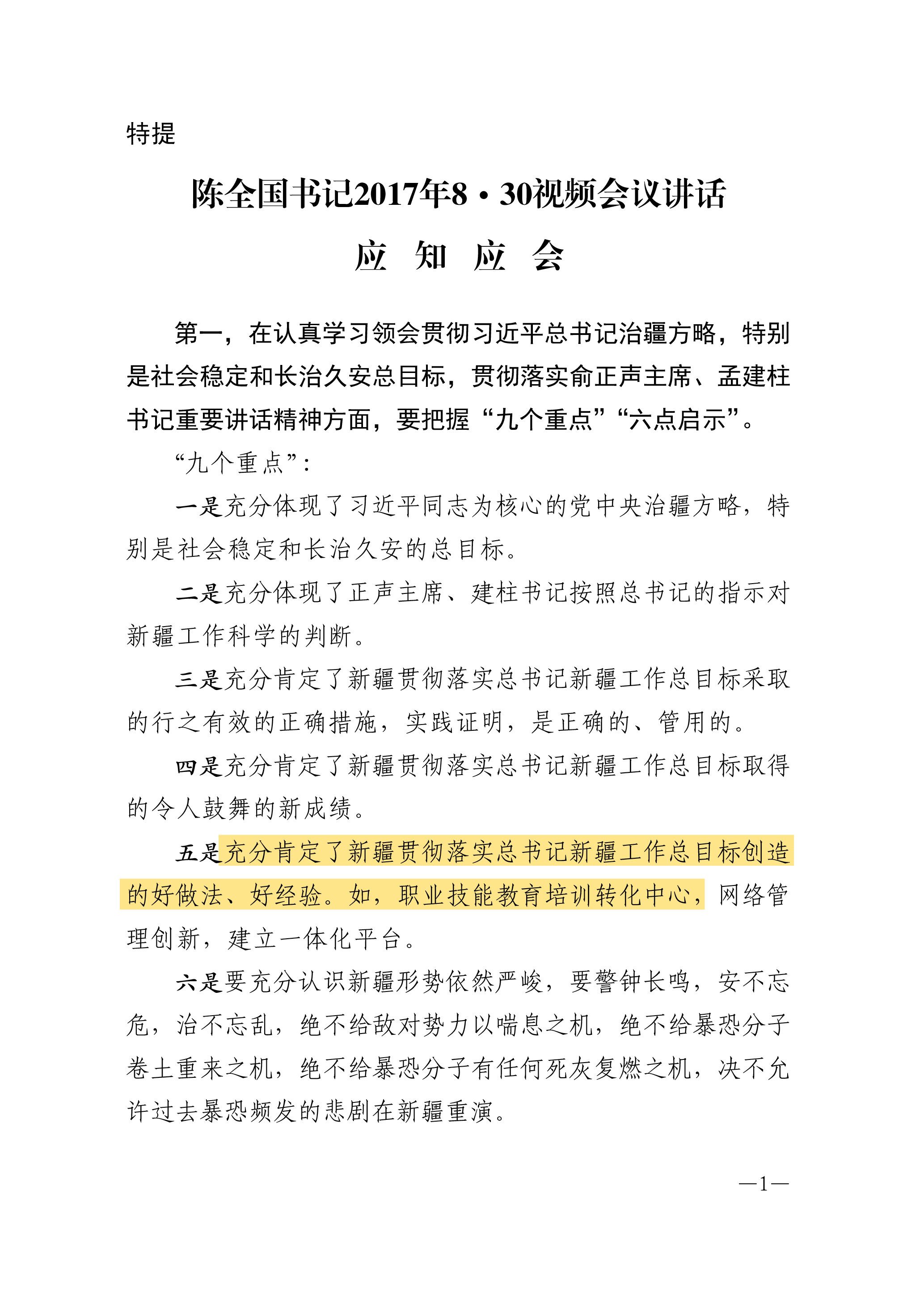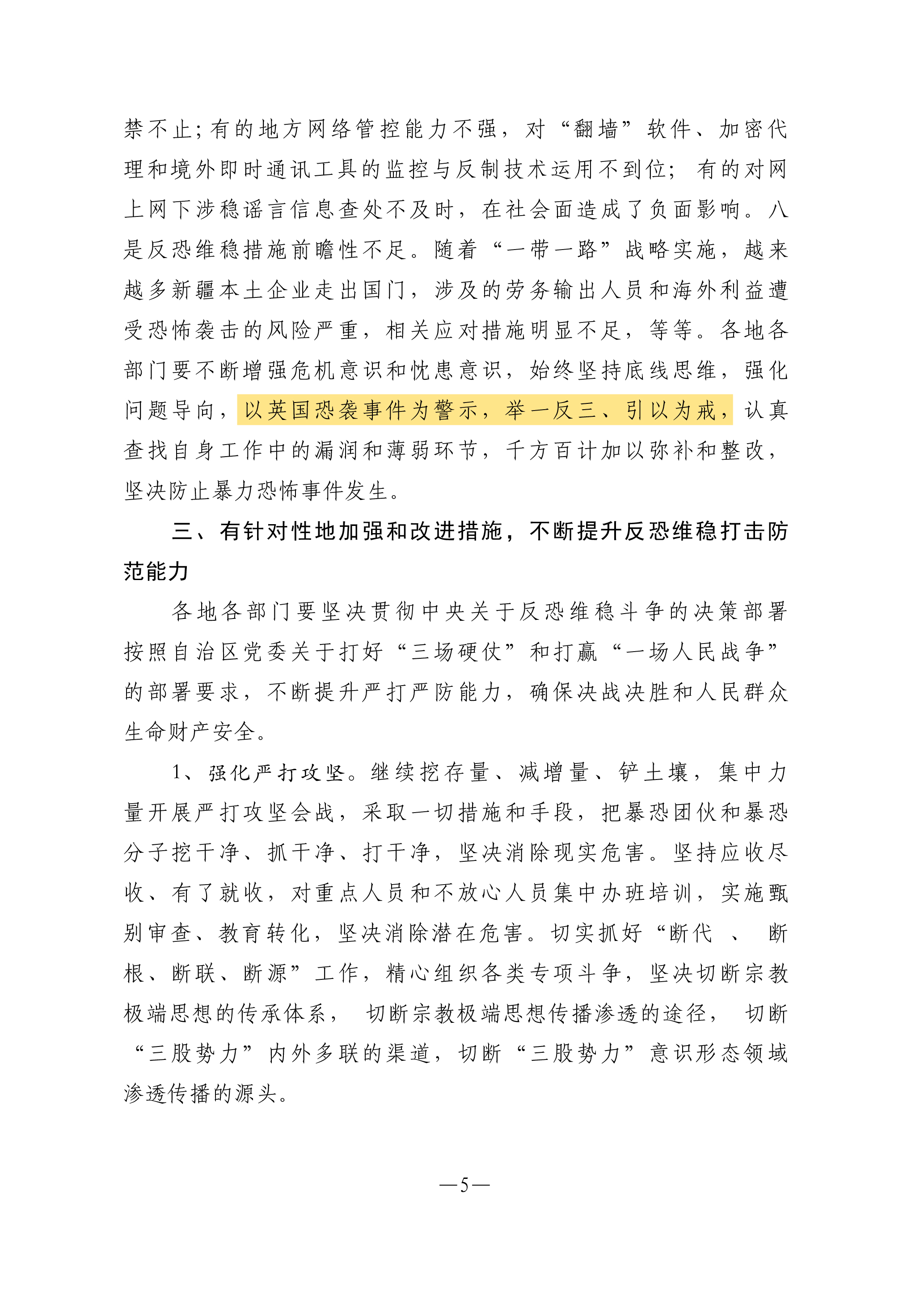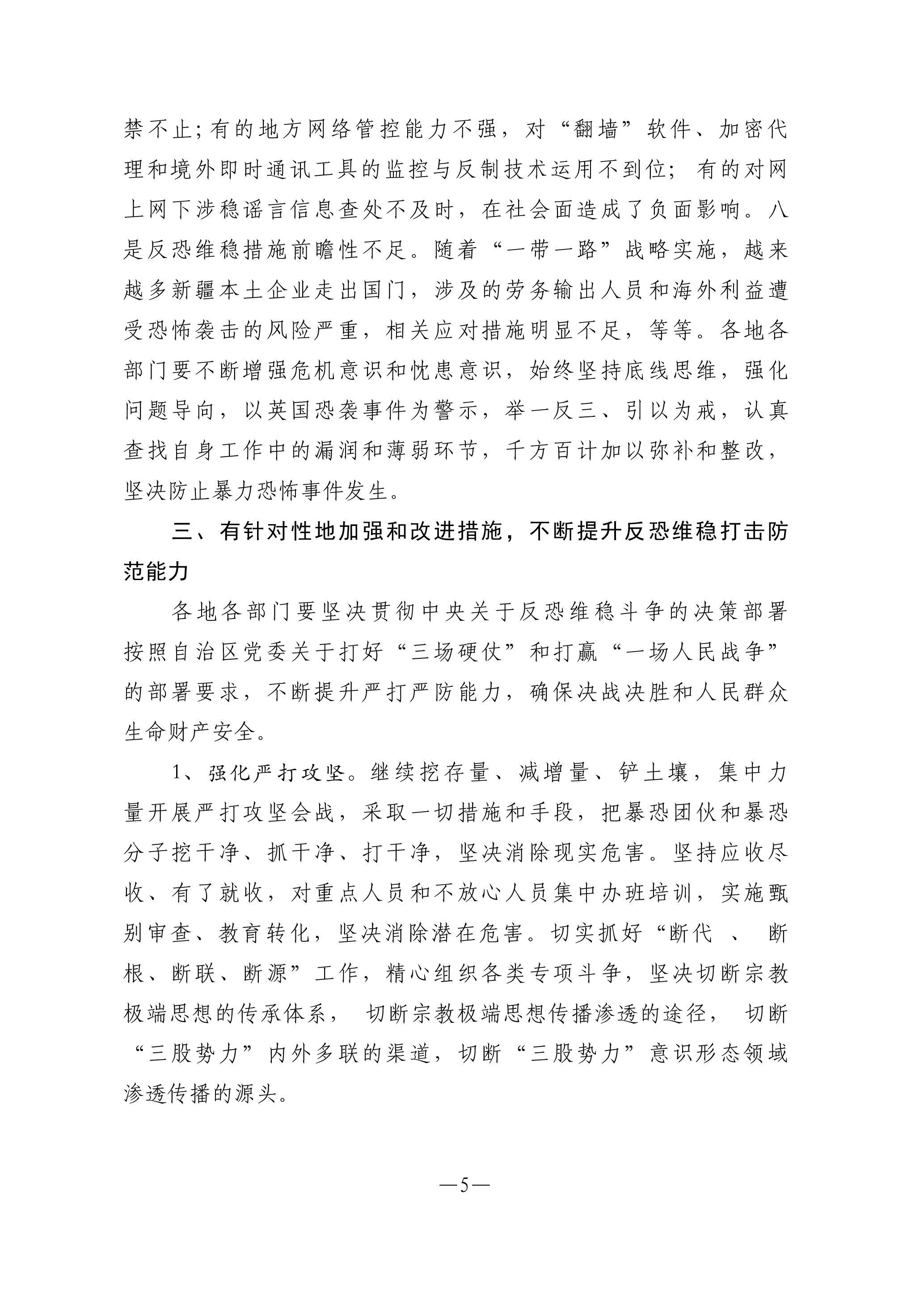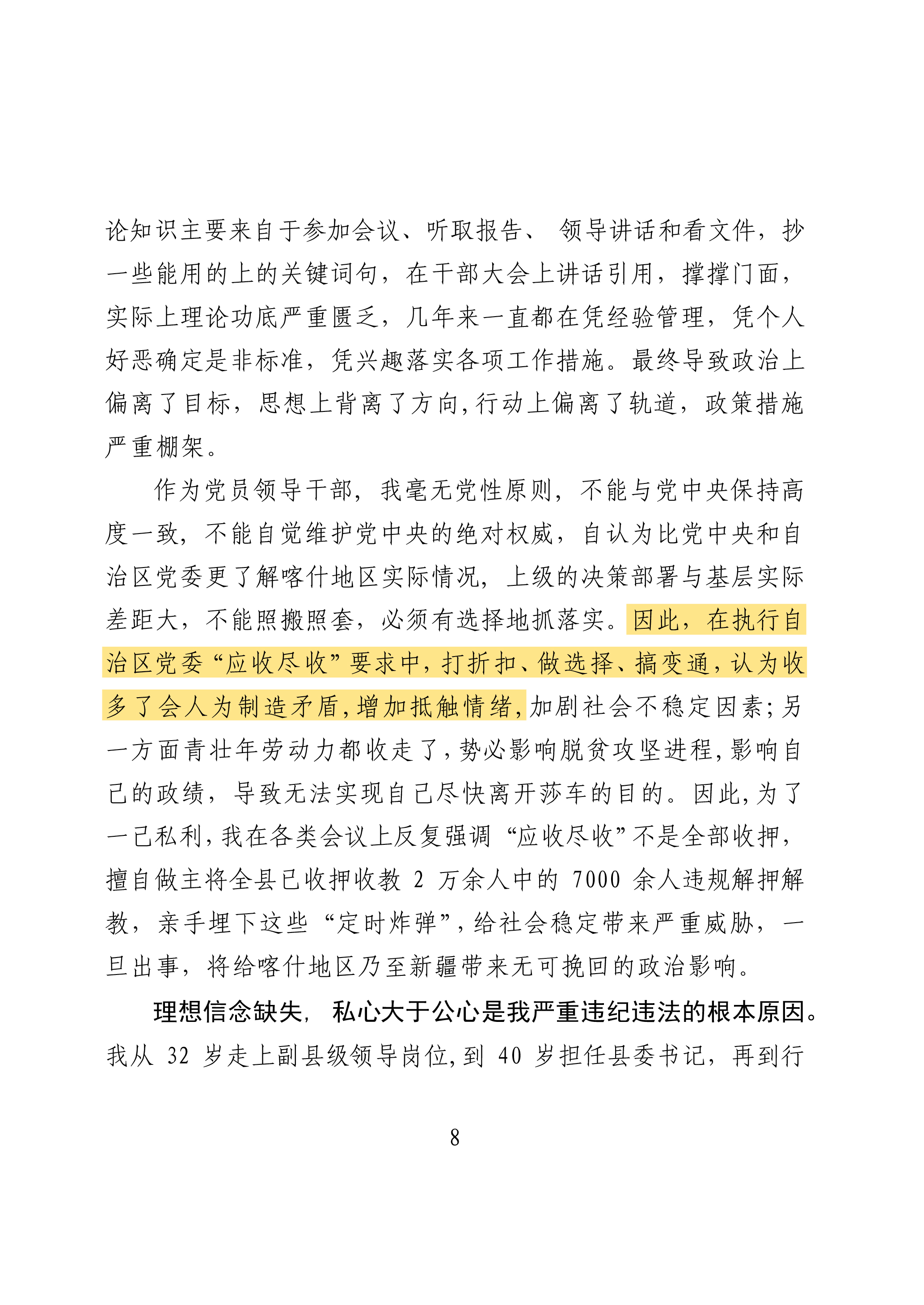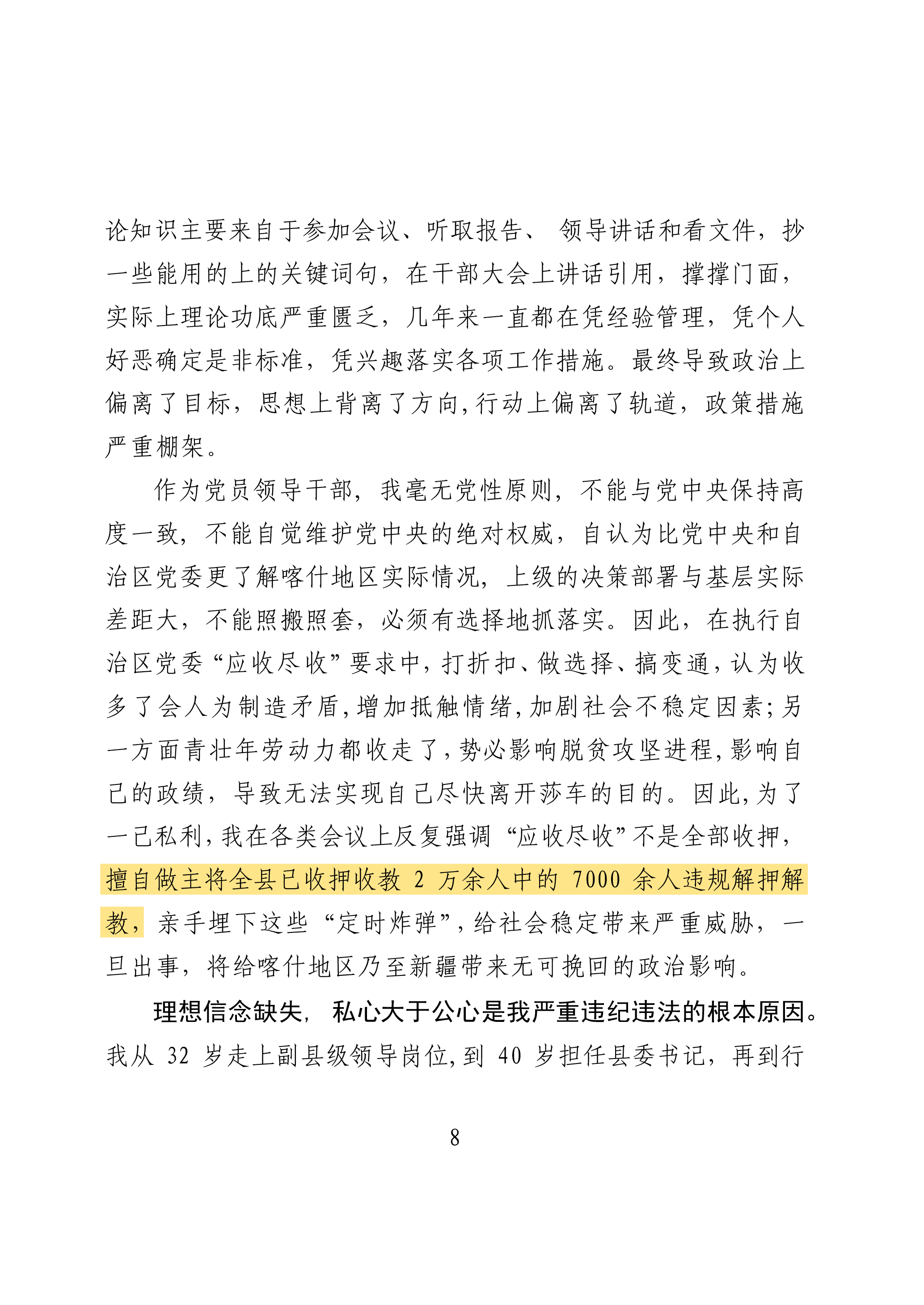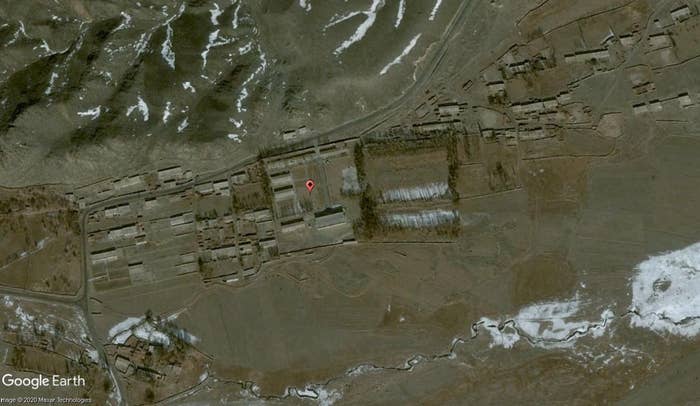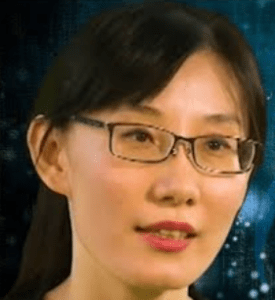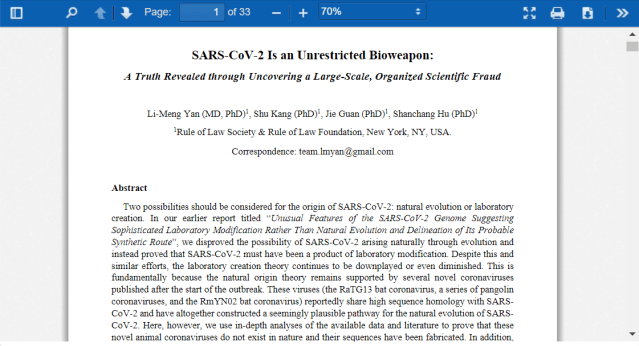I am posting the newest article by Dr. Li-Meng Yan proving that Covid-19 virus is a bioweapon created in a Chinese military lab, and intentionally leaked out to the world. I am not including the referenced figures and citations (due to format limitations); the full report (in pdf format) with all figures and citations can be accessed via this link:
SARS-CoV-2 Is an Unrestricted Bioweapon: A Truth Revealed through Uncovering a Large-Scale, Organized Scientific Fraud
Li-Meng Yan (MD, PhD), Shu Kang (PhD), Jie Guan (PhD), Shanchang Hu (PhD)
Rule of Law Society & Rule of Law Foundation, New York, NY, USA.
Correspondence:
[email protected]
Abstract
Two possibilities should be considered for the origin of SARS-CoV-2: natural evolution or laboratory creation. In our earlier report titled “
Unusual Features of the SARS-CoV-2 Genome Suggesting Sophisticated Laboratory Modification Rather Than Natural Evolution and Delineation of Its Probable Synthetic Route”, we disproved the possibility of SARS-CoV-2 arising naturally through evolution and instead proved that SARS-CoV-2 must have been a product of laboratory modification. Despite this and similar efforts, the laboratory creation theory continues to be downplayed or even diminished. This is fundamentally because the natural origin theory remains supported by several novel coronaviruses published after the start of the outbreak. These viruses (the RaTG13 bat coronavirus, a series of pangolin coronaviruses, and the RmYN02 bat coronavirus) reportedly share high sequence homology with SARSCoV- 2 and have altogether constructed a seemingly plausible pathway for the natural evolution of SARSCoV-2. Here, however, we use in-depth analyses of the available data and literature to prove that these novel animal coronaviruses do not exist in nature and their sequences have been fabricated. In addition, we also offer our insights on the hypothesis that SARS-CoV-2 may have originated naturally from a coronavirus that infected the Mojiang miners.
Revelation of these virus fabrications renders the natural origin theory unfounded. It also strengthens our earlier assertion that SARS-CoV-2 is a product of laboratory modification, which can be created in approximately six months using a template virus owned by a laboratory of the People’s Liberation Army (PLA). The fact that data fabrications were used to cover up the true origin of SARS-CoV-2 further implicates that the laboratory modification here is beyond simple gain-of-function research.
The scale and the coordinated nature of this scientific fraud signifies the degree of corruption in the fields of academic research and public health. As a result of such corruption, damages have been made both to the reputation of the scientific community and to the well-being of the global community.
Importantly, while SARS-CoV-2 meets the criteria of a bioweapon specified by the PLA, its impact is well beyond what is conceived for a typical bioweapon. In addition, records indicate that the unleashing of this weaponized pathogen should have been intentional rather than accidental. We therefore define SARS-CoV-2 as an
Unrestricted Bioweapon and the current pandemic a result of
Unrestricted Biowarfare.
We further suggest that investigations should be carried out on the suspected government and individuals and the responsible ones be held accountable for this brutal attack on the global community.
Introduction
SARS-CoV-2 is a novel coronavirus and the causative agent of the COVID-19 pandemic. Despite its tremendous impact, the origin of SARS-CoV-2, however, has been a topic of great controversy. In our first report titled “
Unusual Features of the SARS-CoV-2 Genome Suggesting Sophisticated Laboratory Modification Rather Than Natural Evolution and Delineation of Its Probable Synthetic Route”, we used biological evidence and in-depth analyses to show that SARS-CoV-2 must be a laboratory product, which was created by using a template virus (ZC45/ZXC21) owned by military research laboratories under the control of the Chinese Communist Party (CCP) government. In addition, resources and expertise are all in place in the Wuhan Institute of Virology (WIV) and related, other CCP-controlled institutions allowing the creation of SARS-CoV-2 in approximately six months.
What have not been fully described in our earlier analyses are details of the novel animal coronaviruses published by the CCP-controlled laboratories after the outbreak1. While no coronaviruses reported prior to 2020 share more than 90% sequence identity with SARS-CoV-2, these recently published, novel animal coronaviruses (the RaTG13 bat coronavirus, a series of pangolin coronaviruses, and the RmYN02 bat coronavirus9) all share over 90% sequence identities with SARS-CoV-2. As a result, these SARS-CoV-2-like viruses have filled an evolutionary gap and served as the founding evidence for the theory that SARS-CoV-2 has a natural origin. In this report, we provide genetic and other analyses, which, when combined with recent findings, prove that these novel animal coronaviruses do not exist in nature and their genomic sequences are results of fabrication.
1. Evidence proving that the RaTG13 virus is fraudulent and does not exist in nature
On February 3rd, 2020, Dr. Zhengli Shi and colleagues published an article in
Nature titled “
A pneumonia outbreak associated with a new coronavirus of probable bat origin” (manuscript submitted on January 20th), which was one of the first publications to identify SARS-CoV-2 as the pathogen causing the disease now widely known as COVID-19. Also reported in this article was a novel bat coronavirus named RaTG13, the genomic sequence of which was shown to be 96.2% identical to that of SARS-CoV-2. The close evolutionary relationship between RaTG13 and SARS-CoV-2 as suggested by the high sequence identity had led to a conclusion that SARS-CoV-2 has a natural origin. These striking findings have consequently made this article one of the most cited publications in the currently overwhelmed field of coronavirus research. Interestingly, an article published by Dr. Yong-Zhen Zhang and colleagues on the same issue of
Nature, which also discovered SARS-CoV-2 as the responsible pathogen for COVID-19, received much less citations. This latter article made no mention of RaTG13. Instead, Zhang and colleagues showed that, evolutionarily, SARS-CoV-2 was closest to two bat coronaviruses, ZC45 and ZXC21, both of which were discovered and characterized by military research laboratories under the control of the CCP government. Immediately after the publication of this article, Dr. Zhang’s laboratory was shut down by the CCP government with no explanations offered.
Since its publication, the RaTG13 virus has served as the founding evidence for the theory that SARSCoV-2 must have a natural origin. However, no live virus or an intact genome of RaTG13 have ever been isolated or recovered. Therefore, the only proof for the “existence” of RaTG13 in nature is its genomic sequence published on
GenBank.
1.1 The sequence of RaTG13 uploaded at GenBank can be fabricated
In order to have the sequence of a viral genome successfully uploaded onto
GenBank, submitters have to provide both the assembled genomic sequence (text only) and raw sequencing reads. The latter is used for quality control and verification purposes. However, due to the huge amount of work involved in assembling raw reads into complete genomes, no sufficient curation is in place to ensure the correctness or truthfulness of the uploaded viral genomes. Therefore, an entry on
GenBank, which in this case is equivalent to the existence of an assembled viral genomic sequence and its associated sequencing reads, is not a definitive proof that this viral genome is correct or real.
Sequencing of a viral RNA genome requires amplifying segments of it using reverse transcriptase PCR (RT-PCR) as the first step. The products of the RT-PCR, which are double-stranded DNA, would subsequently be sent for sequencing. The resulted sequencing reads, each ideally revealing the sequence of a segment of the genome, are then used to assemble the genome of the virus under study (Figure 1A).
Typically, some segments of the genome may not be covered by the initial round of sequencing. Therefore, gap filling will be carried out, where these missing segments will be amplified specifically and the DNA products subsequently sequenced. These steps are repeated until a complete genome can be assembled, ideally with a proper depth to ensure accuracy.
However, this process leaves room for potential fraud. If one intends to fabricate an RNA viral genome on
GenBank, he or she could do so by following these steps: create its genomic sequence on a computer, have segments of the genome synthesized based on the sequence, amplify each DNA segment through PCR, and then send the PCR products (may also be mixed with genetic material derived from the alleged host of the virus to mimic an authentic sequencing sample) for sequencing (Figure 1B). The resulted raw sequencing reads would be used, together with the created genomic sequence, for establishing an entry on
GenBank. Once accomplished, this entry would be accepted as the evidence for the natural existence of the corresponding virus. Clearly, a viral genomic sequence and its
GenBank entry can be fabricated if well-planned.
The complete genomic sequence of RaTG13 was first submitted to
GenBank on January 27th, 2020. The raw sequencing reads were made available on February 13th, 2020 (
NCBI SRA: SRP249482).
However, the sequencing data for gap filling, which is indispensable in assembling a complete genome, was only made available on May 19th, 2020 (
NCBI SRA: SRX8357956). The timing and the reversed order of events here are strange and suspicious.
The raw sequencing reads of RaTG13 have multiple abnormal features. Despite the sample being described as a fecal swab, only 0.7% of the raw sequencing reads are bacterial reads while the bacterial abundance is typically 70~90% when other fecal swab samples were sequenced. In addition, in the identifiable region of certain sequencing reads, a vast majority of reads are eukaryotic sequences, which is also highly unusual in the sequencing of fecal swap-derived samples. Within these eukaryotic reads, 30% of the sequences are of non-bat origin and instead shown to be from many different types of animals including fox, flying fox, squirrels, etc. These abnormal features are significant and indicate that the raw sequencing reads should have been obtained
via a route that is different from the normal one (Figure 1).
No independent verification of the RaTG13 sequence seems possible because, according to Dr. Zhengli Shi, the raw sample has been exhausted and no live virus was ever isolated or recovered. Notably, this information was known to a core circle of virologists early on and apparently accepted by them. It was then made public, months later, by Dr. Yanyi Wang, director general of the WIV, in an TV interview on May 23rd, 2020. Dr. Shi also confirmed this publicly in her email interview with
Science in July 2020.
However, judging from Shi’s published protocol, exhaustion of the fecal swap sample is highly unlikely. According to this protocol, the fecal swab sample would be mixed with 1 ml of viral transport medium and the supernatant collected. Every 140 ul of the supernatant would then yield 60 ul of extracted RNA. For the subsequent step, RT-PCR, 5 ul of this RNA-containing solution is required per reaction.
Therefore, from one fecal swab sample, at least 80 RT-PCR reactions could be carried out ([1000/140] x 60/5=86). Such an amount is sufficient to support both the initial round of sequencing and the subsequent gap filling PCR. It would be sufficient to also allow reasonable attempts to isolate live viruses, although Dr. Shi claimed that no virus isolation was attempted.
Therefore, the RaTG13 virus and its published sequence are suspicious and show signs of fabrication.
1.2 Other suspicions associated with RaTG13
RaTG13 was reported by Dr. Zhengli Shi from the WIV. Dr. Shi is a fellow of the American Academy of Microbiology and one of the most accomplished Chinese virologists. A peer-reviewed article authored by her and published on the top journal
Nature, therefore, brought a great level of comfort for the coronavirus research community in accepting RaTG13 as a true, nature-born bat coronavirus. As a result, RaTG13, upon its timely publication, served as the founding evidence for the natural origin theory of SARS-CoV-2.
However, as revealed in section 1.1, the reported sequence of RaTG13, which is the only proof of the virus’ existence in nature, is problematic and shows signs of fabrication.
Intriguingly, despite the pivotal role of RaTG13 in revealing the origin of SARS-CoV-2, the
information provided for its discovery was surprisingly scarce with key points missing (location and date of sample collection, previous knowledge and publication of this virus, etc):
“
We then found that a short region of RNA-dependent RNA polymerase (RdRp) from a bat coronavirus (BatCoV RaTG13)—which was previously detected in Rhinolophus affinis from Yunnan province—showed high sequence identity to 2019-nCoV. We carried out full-length sequencing on this RNA sample (GISAID accession number EPI_ISL_402131). Simplot analysis showed that 2019-nCoV was highly similar throughout the genome to RaTG13 (Fig. 1c), with an overall genome sequence identity of 96.2%.”
Only in the source section of the NCBI entry for RaTG13 (
GenBank accession code: MN996532.1), one could find that the original sample was a “fecal swab” collected on “July 24th, 2013”. A closer look at the sequence reveals that RaTG13 shares a 100% nucleotide sequence identity with a bat coronavirus RaBtCoV/4991 on a short, 440-bp RNA-dependent RNA polymerase gene (
RdRp) segment.
RaBtCoV/4991 was discovered by Shi and colleagues and published in 2016. As described in the 2016 publication, only a short 440-bp segment of
RdRp of the RaBtCoV/4991 virus was sequenced then. Given the 100% identity on this short gene segment between RaBtCoV/4991 and RaTG13, the field has demanded clarification of whether or not these two names refer to the same virus. However, Dr. Shi did not respond to the request or address this question for months. The answer finally came from Peter Daszak, president of EcoHealth Alliance and long-term collaborator of Shi, who claimed that RaBtCoV/4991 was RaTG13.
RaBtCoV/4991 was discovered in the Yunnan province, China. In 2012, six miners suffered from severe pneumonia after clearing out bat droppings in a mineshaft in Mojiang, Yunnan, and three of them died soon afterwards. Although it was initially suspected that a SARS-like bat coronavirus may be responsible for the deaths, no coronavirus was either isolated or detected from the clinical samples. Also, first-hand record indicates failure of biopsy and no attempt of autopsy, which are the gold standards in the diagnosis of coronavirus infections. The pathogen responsible for the miners’ deaths therefore remained an unsolved case. (
Detailed analyses of the Mojiang Miner Passage hypothesis, which was based on the miners’ case, are provided in section 1.6.) Despite the failed diagnosis, this unknown pathogen nonetheless triggered immense interests in the virologists in China. Three independent teams, including that of Dr. Shi’s, made a total of six visits to this mineshaft. The Shi group particularly looked for the presence of bat coronaviruses by amplifying and then sequencing a 440-bp
RdRp segment, which is a routine procedure the Shi group follows in their surveillance studies. (
As shown in section 2.1 of our first report, this RdRp segment is also frequently used for phylogenetic analyses and is an attractive target for antiviral drug discovery, which may have contributed to the design of incorporating a unique RdRp into the genome of SARS-CoV-2.) Out of the many coronaviruses detected, only RaBtCoV/4991 seemed to belong to the group of SARS-related, lineage B β coronaviruses.
The reporting of RaTG13 is suspicious in three aspects.
First, the whole genome sequencing of RaBtCoV/4991 should not have been delayed until 2020. Given the Shi group’s consistent interests in studying SARS-like bat coronaviruses and the fact that RaBtCoV/4991 is a SARS-like coronavirus with a possible connection to the deaths of the miners, it is highly unlikely that the Shi group would be content with sequencing only a 440-bp segment of
RdRp and not pursue the sequencing of the receptor-binding motif (RBM)-encoding region of the
spike gene. In fact, sequencing of the
spike gene is routinely attempted by the Shi group once the presence of a SARS-like bat coronavirus is confirmed by the sequencing of the 440-bp
RdRp segment, although the success of such efforts is often hindered by the poor quality of the sample.
As quoted above, in the 2020
Nature publication, Shi and colleagues strongly suggested that the sequencing of the full genome was done in 2020 after they discovered the resemblance between RaTG13 and SARS-CoV-2 on the short
RdRp segment4. This, if true, suggests that the quality of the sample should not be poor. Therefore, there is no technical obstacle for the whole genome sequencing of RaBtCoV/4991.
Clearly, the perceivable motivation of the Shi group to study this RaBtCoV/4991 virus and the fact that no genome sequencing of it was done for a period of seven years (2013-2020) are hard to reconcile and explain.
However, an intriguing revelation took place in June 2020. Specifically, filenames of the raw sequencing reads for RaTG13 uploaded on the database were found, which indicate that these sequencing experiments were done in 2017 and 2018. Likely responding to this revelation, in her email interview with
Science, Dr. Shi contradicted her own description in the
Nature publication and admitted that the sequencing of the full genome of RaTG13 was done in 2018.
Second, RaTG13 has a remarkable RBM as suggested by its reported sequence, and the Shi group have no reason to delay its publication until 2020. The most critical segment of a SARS-like β coronavirus is the RBM in the Spike protein as it is fully responsible for binding the host ACE2 receptor and therefore determines the virus’ potential in infecting humans. The RBM is also the most variable region because it is under strong positive selection when the virus jumps over to a new host. Sequence alignment on this crucial RBM motif reveals that the RaTG13 virus rivals with the most highly regarded bat coronaviruses in terms of resemblance to SARS (Figure 2). RaTG13’s RBM not only is complete in reference to that of SARS but also is outstanding in its preservation of five residues perceived by Dr. Shi as key in binding human ACE2 (hACE2) (Figure 2, residues labeled with red texts). At position 472, RaTG13 is the only bat coronavirus that shares a leucine (L) residue with SARS, while the other four key residues are also largely conserved between the two viruses. Importantly, similar conservation patterns revealed in related bat coronaviruses, Rs3367 and SHC014, had led to their publication in
Nature in 2013. Furthermore, viruses with less “attractive” RBM sequences (having large gaps and poor in the preservation of key residues, bottom half of the sequences in Figure 2) were also published by Dr. Shi in other top virology journals between 2013 and 2018. Therefore, if the genomic sequence of RaTG13 had been available since 2018, it is unlikely that this virus, which has a possible connection to miners’ deaths in 2012 and has an alarming SARS-like RBM, would be shelfed for two years without publication. Consistent with this analysis, a recent study indeed proved that the RBD of RaTG13 (
produced via gene synthesis based on its published sequence) was capable of binding hACE2.
Third, no follow-up work on RaTG13 has been reported by the Shi group. Upon obtaining the genomic sequence of a SARS-like bat coronavirus, the Shi group routinely investigate whether or not the virus is capable of infecting human cells. This pattern of research activities has been shown repeatedly.
However, such a pattern is not seen here despite that RaTG13 has an interesting RBM and is allegedly the closest match evolutionarily to SARS-CoV-2.
Clearly, these three aspects deviate from normal research activities and logical thinking, which are difficult to reconcile or explain. They should have contributed to the intentional omission of key information in the reporting of RaTG13.
For publications of biological research, it is unethical for authors to change the name of a previously published virus without any notice or description. It is also unethical for authors to not cite their own
publication where they had characterized and reported the same virus. The violations here by Shi and colleagues on the reporting of RaTG13 are especially aggravating as the discovery of RaTG13 was central to uncovering the origin of SARS-CoV-2. By the time of the publication, SARS-CoV-2 had already led to many deaths in the city of Wuhan and had shown an alarming potential of causing a pandemic. In her much-delayed response to
Science published on July 31st, 2020, Dr. Shi finally commented on the name change and stated that changing the name to RaTG13 was meant to better reflect the time and location of sample collection (TG = Tongguan; 13 = 2013). However, such an intention does not seem to justify why the previous name of RaBtCoV/4991 was never mentioned in the 2020 article and why they did not cite their own 2016 publication where RaBtCoV/4991 was first reported. Dr. Shi’s recent clarification did not alter the fact that they have violated the reporting norms of biological research.
In summary, a range of suspicions were associated with the reporting of RaTG13, including the violations of scientific publication principles, the inconsistency in the descriptions of the sequencing dates, and the contradiction between the sequencing of its genome in 2018 and the publication of it in 2020 when this virus has a striking RBM and a possible connection to pneumonia-associated deaths. Adding to these suspicions are the exquisite timing of its publication, the problematic nature of its reported sequence and raw sequencing reads, and the claim that no sample is left for independent verification. Collectively, these facts justify and legitimate the concern over the true existence of the RaTG13 virus in nature and the truthfulness of its reported genomic sequence. They also question the claim that the RaBtCoV/4991 virus and RaTG13 are equivalent.
1.3 Genetic evidence proving the fraudulent nature of RaTG13
This evidence was revealed after a close examination of the sequences of specific genes, especially
spike, of relevant viruses. Specifically, we compared two viruses for the synonymous and nonsynonymous mutations on each gene, and we did so for two pairs of viruses. The first pair are bat coronaviruses ZC45 and ZXC21. The second pair are SARS-CoV-2 and RaTG13. The rationale for comparing these two pairs with each other is the following. First, ZC45 and ZXC21, each sharing an 89% genomic sequence identity with SARS-CoV-2, are the closest relatives to SARS-CoV-2 and RaTG13.
Second, ZC45 and ZXC21 are 97% identical to each other, while SARS-CoV-2 and RaTG13 are 96% identical. Not only the sequence identity in each case is comparable, but also the high sequence identity indicates that, within each pair, the sequence difference should be a result of random mutations during evolution, which ensures that synonymous and non-synonymous analyses here are appropriate and not complicated by abrupt evolutionary events (e.g. recombination). Indeed, sequence alignment confirms such a scenario – in both cases, the curve is smooth and the high sequence identity is maintained
throughout (Figure 3).
Detailed synonymous (syn, green curve) and non-synonymous (non-syn, red curve) analyses are shown in Figure 4. For each gene, the accumulations of syn and non-syn mutations, respectively, are illustrated when the codons are analyzed in a sequential order. For the
spike genes, between ZC45 and ZXC21, the syn/non-syn ratio is 5.5:1 (Figure 4A left, 94 syn mutations and 17 non-syn mutations). Notably, the two curves progress along in a roughly synchronized manner. These features reflect, to a certain extent, the evolutionary traits resulted from random mutations during evolution in this sub-group of lineage B β coronaviruses.
The same analysis on the
spike genes of SARS-CoV-2 and RaTG13, however, revealed a different scenario (Figure 4B right). Although the overall syn/non-syn ratio is a similar 5.4:1 (221 syn mutations and 41 non-syn mutations), the synchronization between the two curves is non-existent. In the second half of the sequence, which is over 700 codons (2,100 nucleotides) wide, the non-syn curve stays flat when the syn curve climbs continuously and significantly.
Counting the syn and non-syn mutations of the S2 region (corresponding to residues 684-1273 of the SARS-CoV-2 Spike) reveals that, between ZC45 and ZXC21, there are a total of 27 syn mutations and 5 non-syn mutations, yielding a syn/non-syn ratio of 5.4:1. In contrast, for the same S2 region, between SARS-CoV-2 and RaTG13, there are a total of 88 syn mutations and 2 non-syn mutations, yielding a syn/non-syn ratio of 44:1. The syn/non-syn ratios for S2, whole Spike, and other large viral proteins (Orf1a, Orf1b, and Nucleocapsid) are summarized in Table 1. While the ratios are comparable between the two groups for all other proteins, the ratios for the S2 protein are significantly different.
The detailed syn/non-syn analyses for Orf1a, Orf1b, and N are shown in Figure 4B-D. It is also noteworthy that, similar to that of Spike, the approximate synchronization between two curves is observed for the Orf1a protein in the ZC45 and ZXC21 comparison (Figure 4B left) but not in the SARS-CoV-2 and RaTG13 comparison (Figure 4B right).
The S2 protein maintains trimmer formation of the Spike and, upon successive cleavages to expose the fusion peptide, mediates membrane fusion and cell entry. Although the S2 protein is more conserved evolutionarily than S1, the extremely high purifying pressure on S2 as suggested by the very high syn/nonsyn ratio is abnormal. In fact, Orf1b is known to be the most conserved protein in coronaviruses and yet the syn/non-syn ratio for it is only 10.8:1 when SARS-CoV-2 and RaTG13 are compared, much lower than the ratio of 44:1 observed for S2 (Table 1). Furthermore, since RaTG13 and SARS-CoV-2 infect different species, no high purifying selection on S2 should be expected when these two viruses are compared against each other.
Consistent with the above notion, a syn/non-syn analysis done for the Spike protein of twenty randomly selected SARS-CoV-2 sequences showed that S2 was under positive selection, not purifying selection, during the past eight months of human-to-human transmission (Figure 5). For the twenty SARS-CoV-2 isolates, amino acid mutations are observed at five different locations in S2 (Figure 6). In addition, a recent study analyzing 2,954 genomes of SARS-CoV-2 revealed that mutations have been observed at 25 different locations in the S2 protein41, further proving that amino acid mutations are tolerated in S2 and no high purifying pressure should be observed for S2. Evidently, the syn/non-syn ratio of 44:1 revealed between SARS-CoV-2 and RaTG13 on the S2 region is abnormal (Table 1) and a violation of the principles of natural evolution.
A logical interpretation of this observation is that
SARS-CoV-2 and RaTG13 could not relate to each other through natural evolution and at least one must be artificial. If one is a product of natural evolution, then the other one must be not. It is also possible that neither of them exists naturally.
If RaTG13 is a real virus that truly exists in nature, then SARS-CoV-2 must be artificial.
However, the reality is that SARS-CoV-2 is physically present and has first appeared prior to the reporting of RaTG13. This would then lead to the conclusion that RaTG13 is artificial, a scenario consistent with the overwhelming suspicion that this virus does not exist in nature and its sequence has been fabricated.
The remaining possibility is, of course, that both SARS-CoV-2 and RaTG13 are artificial: one has been created physically and the other one exists only in the form of a fabricated sequence.
It is highly likely that the sequence of the RaTG13 genome was fabricated by lightly modifying the SARS-CoV-2 sequence to achieve an overall 96.2% sequence identity. During this process, much editing must have been done for the
RBM region of the
S1/spike because the encoded RBM determines the interaction with ACE2 and therefore would be heavily scrutinized by others. An RBM too similar to that of SARS-CoV-2 would be troublesome because: 1) RaTG13 could be conceived as a product of gain-of-function research; 2) it would leave no room for an intermediate host and yet such a host is believed to exist as the Spike/RBM needs to first adapt in an environment where the ACE2 receptor is homologous to hACE2. In addition, modifying the sequence of the RBM is also beneficial as RaTG13 would otherwise appear to be able to infect humans as efficiently as SARS-CoV-2 does, escalating the concern of a laboratory leak. To eliminate such concerns, many non-syn mutations were introduced into the RBM region.
Importantly, syn/non-syn analysis is frequently used, often at the ORF/protein level, to characterize the
evolutionary history of a virus. While editing the RBM, the expert(s) carrying out this operation must be conscious of the need to maintain a reasonable syn/non-syn ratio for the whole Spike protein. To achieve so, however, the expert(s) must have then strictly limited the number of non-syn mutations in the S2 half of Spike, which ended up flattening the curve (Figure 4A right).
1.4 The receptor-binding domain (RBD) of RaTG13 does not bind ACE2 of horseshoe bats
Consistent with the above conclusion that RaTG13 does not exist in nature and its sequence was fabricated, a recent study showed that the RBD of RaTG13 could not bind the ACE2 receptors of two different kinds of horseshoe bats,
Rhinolophus macrotis and
Rhinolophus pusillus. Although the ACE2 receptor of
Rhinolophus affinis (the alleged host of RaTG13) was not tested, it is unlikely that ACE2 of
R. affinis would differ significantly from those of its close relatives and be able to bind the RaTG13 RBD.
This result therefore implicates that RaTG13 would not be able to infect horseshoe bats, contradicting the claim made by Shi and colleagues that the virus was detected and discovered from horseshoe bats. This is also consistent with the above conclusion that the genomic sequence of RaTG13 is fabricated and presumably computer-edited, which entails that the RBM/RBD suggested by the corresponding gene sequence may not be functional in binding the ACE2 receptor of the claimed host.
1.5 Conclusion and postulation of the fabrication process
In conclusion, the evidence presented both here and from recent literature collectively prove that RaTG13 does not exist in nature and its sequence has been fabricated.
If the RaBtCov/4991 virus is equivalent to RaTG13, then RaBtCoV/4991 must be fraudulent as well.
Apparently, in the actual process of sequence fabrication, the published sequence of the short
RdRp segment of RaBtCoV/4991 was completely inherited for RaTG13. This way, they could claim that RaTG13 was RaBtCoV/4991, which, according to the record, was discovered in 2013. If RaTG13 had been described as being discovered right around the time of the COVID-19 outbreak, greater suspicions would result as tracing the evolutionary origin of a zoonotic virus is difficult and usually takes years or
decades. As described in section 2.1 of our earlier report1, the fabrication of RaTG13 should have been planned and executed in coordination with the laboratory creation of SARS-CoV-2.
Such an approach is also safe because, except for the 440-bp
RdRp segment, no other sequence information has ever been published for the rest of the RaBtCoV/4991 genome.
It is worth noting that, due to reasons detailed in section 1.2, they still preferred to obscure the history of RaTG13. However, they must have also anticipated that their violations of the publication norms would invite inquiries or requests for clarifications, the number of which, however, should be limited and manageable. RaBtCoV/4991 would then function as an additional layer of security for them in facing such inquiries and/or requests.
Building upon the 440-bp
RdRp sequence inherited from RaBtCoV/4991, the rest of the RaTG13 genome was likely fabricated by lightly editing the sequence of SARS-CoV-2. Once the genomic sequence was finalized, DNA fragments could be synthesized individually according to the fabricated and edited sequence and then used as templates for PCR. Amplified DNA would then be mixed with certain raw material to give the sample a natural look (mimicking what is present in an actual RT-PCR, which is done using RNA extracted from fecal swabs as templates). Subsequently, this sample would be sent for sequencing. The resulted raw sequencing reads could then be uploaded together with the made-up genomic sequence onto
GenBank to create an entry for the RaTG13 genome.
1.6 The Mojiang Miner Passage (MMP) hypothesis is fatally flawed
Recently, a theory has emerged, which proposed that SARS-CoV-2 was derived from viral passaging in the lungs of the infected Mojiang miners back in 2012. Specifically, authors believe that the RaBtCoV/4991 virus was indeed RaTG13 and was the virus causing pneumonia in the miners in 2012.
While inside the lungs of the miners, the RaTG13 virus had evolved extensively, mimicking a viral passage process, and eventually became SARS-CoV-2. In this process, the RBD of the virus experienced strong positive selection, through which it became optimal in binding hACE2. Furthermore, the furin cleavage site at the S1/2 junction region of Spike had been acquired through recombination between the viral
spike gene and the gene encoding the human ENaC protein, which has a furin-cleavage sequence closely resembling that of SARS-CoV-2. The end product of this passage was SARS-CoV-2, which the researchers isolated from the miners’ samples and brought back to the WIV. The authors have named this hypothesis as the Mojiang Miner Passage (MMP) hypothesis.
However, this MMP hypothesis has fatal flaws.
First, the viral pathogen that caused the disease in the miners could not be defined or confirmed.
According to the record, which was well documented in a Master’s Thesis written by the doctor in charge, samples from two patients (throat swabs and blood) were tested at the Center for Disease Control and Prevention of the Chengdu Military Region between May 15th and May 20th, 2012, and yet none of the suspected viruses, including SARS, was detected. Furthermore, the gold standard in the clinical diagnosis of coronavirus-caused pneumonia is biopsy and/or autopsy followed by confirmation by either RT-PCR or isolation of the virus. However, three biopsy tests were attempted but failed. Autopsy tests were requested and yet all turned down by families of the deceased miners. Due to such failure, both the Master’s Thesis and later a PhD Dissertation, which also looked into this issue although in an indirect manner, described the cause of the pneumonia as an unsolved case.
Second, antibody tests done for the miners do not support SARS or SARS-like coronavirus infection.
According to the Master’s Thesis, samples from two miners were tested for antibodies against SARS.
The symptoms onset date for one miner (case 3, passed away) was around April 13th, 2012. The other miner (case 4, had severe symptoms and yet recovered) had symptoms onset around April 16th, 2012.
Antibody tests, which were recommended later by Dr. Nanshan Zhong, were done at the WIV on June 19th, 2012. However, the two samples tested were only positive for IgM. No positive IgG or total antibody were reported. No antibody titer was reported either. Importantly, if the severe pneumonia was caused by coronavirus infections, by the time of the antibody tests on June 19th, 2012, both IgM and IgG/total antibody should be detected. In fact, IgG/total antibody should be much more abundant and easier to detect. On the other hand, IgM tests frequently result in false positives. Therefore, the fact
that only IgM, and no IgG/total antibody, was tested positive suggests that the described results were most likely false positives and the infections should not have been caused by SARS or a SARS-like coronavirus.
It is noteworthy that the later PhD Dissertation showed severe discrepancies with the Master’s Thesis in the descriptions of the same clinical tests:
1. The PhD Dissertation described that samples from four miners (throat swab and blood) were sent to the Center for Disease Control and Prevention of the Chengdu Military Region for nucleic acid tests. However, the Master’s Thesis indicated that samples were only taken from two miners.
2. The PhD Dissertation described samples from four miners were tested for anti-SARS antibodies at the WIV and all were IgG positive. However, the Master’s Thesis indicated that only samples from two miners were tested at the WIV and both were only IgM positive.
Importantly, the Master’s Thesis was written in 2013 in Yunnan by the doctor who was in charge of the six hospitalized miners. The PhD dissertation, however, was written in 2016 in Beijing based only on the clinical record. The author of the Dissertation had no direct involvement in the treatment of the miners or in any of the described tests. It is therefore highly likely that author of the PhD dissertation did not verify the clinical data he presented, which makes this PhD dissertation an unreliable source of information concerning the Mojiang miners’ case.
Third, if SARS-CoV-2 was already present in the miner’s body in 2012, it would have certainly caused an epidemic or even pandemic then. Given the extremely high transmissibility of SARS-CoV-2, it would be impossible for the doctors, nurses, family members of the miners, etc. to have avoided contracting the virus without the protection of proper PPE. If an epidemic indeed happened in 2012, it could not have gone unnoticed given the high transmissibility and lethality (three out of the six pneumonia patients died despite of intense medical care provided for them).
Fourth, as shown in sections 1.1-1.5, RaTG13’s sequence is clearly fabricated and the virus does not exist in nature. The RaBtCoV/4991 virus, which was detected in 2013, is not the RaTG13 virus that is defined by its reported genomic sequence. No complete genomic sequence of RaBtCoV/4991 has ever been reported likely due to the poor quality of the sample, which happens often as the RNA genome decays easily. It is highly likely that no high homology is shared between the actual RaBtCoV/4991 virus and SARS-CoV-2. This judgement is based on the fact that no viruses reported prior to 2020 share more than 90% sequence identity with SARS-CoV-2 despite the extensive surveillance studies of coronaviruses for the past two decades. Therefore, even if RaBtCoV/4991 was the pathogen responsible for the pneumonia of the miners, the theory that it has evolved in a single person’s lung into SARS-CoV-2 is far beyond being reasonable.
Fifth, it is impossible for the Spike protein of the virus to obtain a unique furin-cleavage site at the S1/S2 junction through recombination with the gene encoding the ENaC protein of the host cell (ENaC carries a furin cleavage site closely resembling the one seen in SARS-CoV-2). This is because recombination requires a significant level of sequence similarity between the two participating genes and yet no such similarity is present between coronavirus Spike and human ENaC. The molecular basis for recombination is non-existent. (
Although recombination between ENaC and coronavirus Spike is impossible, it is suspicious that a viral protein and a host protein would share the same sequence for their furin-cleavage sites. It is possible, though, that the sequence of the furin-cleavage site in ENaC, which is known since 1997, could have been used in the design of the furin-cleavage site in the Spike of SARSCoV-2. Such a design may be considered sophisticated as ENaC co-expresses with ACE2 in many different types of cells.)
Sixth, if SARS-CoV-2 has indeed evolved from RaBtCoV/4991 in the miner’s lungs, it would look, from every aspect, like a naturally occurring virus. In that case, there would be no need to commit sequence fabrication for RaTG13 and for the other novel coronaviruses (parts 2 and 3) to falsify a natural origin for SARS-CoV-2.
Finally, as revealed in our earlier report, evidence exists in the genome of SARS-CoV-2, indicating that genetic manipulation is part of the history of SARS-CoV-2.
2. Evidence proving that recently published pangolin coronaviruses are fraudulent and do not exist in nature
While RaTG13 was reported to share a high sequence identity with SARS-CoV-2 and thereby hinted a natural origin of SARS-CoV-2, significant questions remained unanswered:
• No intermediate host has been found although one was believed to exist and function as the reservoir of the virus before it spilled over to humans.
• Despite the overall genomic resemblance of the two viruses, the RBD (particularly the RBM within it) of RaTG13 differs significantly from that of SARS-CoV-2. The evolutionary origin of the SARS-CoV-2 RBD, which is optimal in binding hACE2, remained unclear.
• A critical furin-cleavage site, which is present at the S1/S2 junction of SARS-CoV-2 Spike and responsible for the enhanced viral infectivity and pathogenicity, is absent in RaTG13 (as well as in all known lineage B β coronaviruses). The evolutionary origin of this furin-cleavage site also remained mysterious.
Not long after these questions emerged, several laboratories published novel coronaviruses allegedly found in Malayan pangolins that were smuggled from Malaysia and confiscated by the Chinese custom. Although these novel coronaviruses share relatively lower overall sequence identities (~90%) with SARS-CoV-2 in comparison to RaTG13 (96.2% identical to SARS-CoV-2), the RBD of the pangolin coronaviruses resembles greatly the SARS-CoV-2 RBD (97.4% identical). In the most critical RBM
region, all amino acids except one are identical between the pangolin coronaviruses and SARS-CoV-2.
These observations led the authors to conclude 1) that pangolins are the likely intermediate host for the zoonotic transfer of SARS-CoV-2 and 2) that a RaTG13-like ancestor coronavirus might have acquired the RBD from a pangolin coronavirus through recombination to eventually become SARS-CoV-2.
Here, in part 2 of the report, we describe literature evidence and provide genetic analyses to prove that these novel pangolin coronaviruses are results of fabrication.
2.1 A single batch of pangolin samples were used in all studies and the deposited sequencing data showed heavy contamination and signs of fabrication
In October 2019, a team formed by three researchers from two institutions (Guangdong Institute of Applied Biological Resources and Guangzhou Zoo) reported, for the first time, the detection of coronavirus infections in pangolins that were allegedly smuggled from Malaysia and confiscated in the Guangdong province in March 2019. Twenty-one pangolin samples were sequenced and five were positive for coronavirus infections (Table 2: lung 2, 7, 8, 9, and 11), although Sendai virus infection was also reported. However, neither the sequences of the coronaviruses nor raw sequencing data were made available to the public for a period of three months. The raw data (
NCBI BioProject PRJNA573298) was finally released on January 22nd, 2020 after the COVID-19 outbreak started, while the article submission date was September 30th, 2019 and the publication date was October 24th, 2019.
Between March and May 2020, four seemingly independent studies were published, all of which reported novel pangolin coronaviruses and their assembled genomic sequences. However, after a closer look, we found that all four studies derived viral sequences from the same set of pangolin samples first reported in the October 2019 publication, which has been confirmed by a recent article.
In one study, Liu et al. (the same authors of the October 2019 publication) re-assembled the genome of a pangolin coronavirus by pooling two samples from the original 2019 study and one sample obtained from another Malayan pangolin rescued in July 2019. However, although the authors stated that the more recent raw sequencing data had been deposited at the NCBI database, we could not find this data using the accession number (2312773) provided. The same difficulty has been reported by others. Therefore, it cannot be verified whether the July 2019 dataset truly exists and has contributed to the assembly of the reported genome.
In two other studies, Lam et al. and Zhang et al. each re-assembled the genome of a pangolin coronavirus using only the published dataset from the October 2019 study. Lam et al. also reported detection of coronaviruses from smuggled Malayan pangolins that were confiscated in the Guangxi province, although these viruses showed lower sequence identities to SARS-CoV-2 both at the whole genome level (~86%) and in the critical RBD region. It is noteworthy that this study was done as a collaboration between Dr. Yi Guan’s group from the University of Hong Kong and Dr. Wuchun Cao’s group from the Academy of Military Medical Sciences (AMMS), Beijing, China. Somehow, all authors affiliated with the AMMS were excluded from the list of authors when the article was first submitted, although their names eventually appeared in the final version of the publication.
In the fourth study, Xiao et al. claimed to have examined tissue samples kept from diseased pangolins and obtained raw sequencing data for the subsequent assembly. However, they did not describe how the samples were acquired. In their Extended Data Table 3, they listed the metagenome sequencing data used in the study, which, surprisingly, do not match with the actual data that they uploaded in the database (Table 2). Samples M1, M5, M6, M10, and Z1 can be found in the data they deposited, but not M2, M3, M4, and M8. Furthermore, Xiao et al. apparently were inconsistent with the reporting of these raw sequencing reads. For samples M1, M6, pangolin3, and pangolin5, they counted
paired ends numbers, which reflect the actual number of sequenced DNA fragments in the library. For the rest of samples, the authors counted
reads numbers instead (In Illumina sequencing, there are two
reads per fragment). For samples M2, M3, M4, and M8 in this latter group, when the
reads numbers were converted to
paired ends numbers (divided by 2), they each match perfectly with lung07, lung02, lung08, and lung11, respectively, from the October 2019 study (Table 2). Clearly, Xiao et al. used the data published in a previous study but failed to disclose this necessary information in their publication. In fact, they intentionally presented the “number of reads” in a different format to presumably make readers overlook the fact that the same sequencing dataset was used.
It is noteworthy that the study by Xiao et al. was also done in collaboration with the AMMS. Prior to the publication of the manuscript, this work was first publicized in a press conference. As revealed in this conference, four principle investigators contributed to the work and one of them was Dr. Ruifu Yang from the AMMS. However, like what happened to Dr. Cao and his AMMS colleagues in the Lam et al. study, Dr. Yang’s name was excluded in the submitted manuscript of Xiao et al. Yet, unlike the other case, the AMMS researcher’s name did not re-appear in the final publication. It is also noteworthy that the two AMMS principle investigators here, Dr. Yang and Dr. Cao, are long-term collaborators and most of their collaborative work concerned genetic analyses of SARS-CoV.
Among the four studies, only two assembled complete genomes by performing gap filling using PCR.
However, neither group made their gap filling sequences available, rendering independent verification impossible. Notably, the delayed publishing of raw sequencing reads long after the publication of genomic sequences has occurred in the reporting of RaTG13 as well.
Adding to the above problems was the poor quality of the raw sequencing data, which has been described recently. We also analyzed the composition of the sequencing reads of the deposited libraries. By performing taxonomy analysis on the NCBI SRA database, we also found that samples from Liu et al. that are positive for coronavirus reads are all positive for reads that map to human genome (Table 2). In great contrast, the rest of the samples, which are negative for viral reads, also have no human reads detected. The same correlation is found in data presented by Xiao et al. Although samples M5 (pangolin 6) and M6 (pangolin2) are negative for human reads, these two samples have very few viral reads, which would hardly contribute to the viral genome assembly. Clearly, the human contamination should not be due to sample handling as none of the coronavirus-negative samples, which must have been handled similarly, contain such contamination. The consistent co-existence of viral reads and human reads are highly suspicious.
These observations raise red flags not only on the credibility of the assembled sequences but also on the authenticity of these novel pangolin coronaviruses. It is also noteworthy that the manuscript submission dates for all four studies were between February 7th and February 18th, suggesting that their publications might have been coordinated.
2.2 No coronavirus was detected in an extensive surveillance study of Malayan pangolins
While these SARS-CoV-2-like pangolin coronaviruses were described as being detected in smuggled Malayan pangolins, a recent study strongly refuted the presence of such pangolin coronaviruses in nature.
A team led by Dr. Daszak examined 334 pangolin samples, which were collected in Malaysia and Sabah from August 2009 to March 2019. Surprisingly, no coronaviridae, or any of the other families of viruses (filoviridae, flaviviridae, orthomyxoviridae, and paramyxoviridae), were detected in any of these samples.
This is in stark contrast with the October 2019 publication where both coronavirus infection and Sendai virus infection were reportedly detected in the smuggled Malayan pangolins, which eventually led to the discovery and publication of the novel pangolin coronaviruses. The finding of Lee et al. adds significantly to the existing suspicions and substantiates the possibility that these pangolin coronaviruses do not exist in nature and their sequences could have been fabricated.
2.3 The RBD of the reported pangolin coronaviruses binds poorly to pangolin ACE2
If pangolin coronaviruses truly exist and have recently spilled over to infect humans, their Spike protein, especially the RBD within Spike, should bind to pangolin ACE2 (pACE2) more efficiently than to hACE2.
However, recent findings have contradicted this theory. In an
in silico study, Piplani et al. calculated, following homology structural modeling, the binding energies involved in the association between SARSCoV-2 Spike and ACE2 from either human or various animals. Interestingly, the most favorable interaction that SARS-CoV-2 Spike makes was shown to be with hACE2, but not with ACE2 from pangolin or any other suspected intermediate host. Furthermore, another study revealed, using a robust
in vitro binding assay, that the RBD of SARS-CoV-2 binds much tighter (greater than 9-fold) to hACE2 than to pACE2. Although the RBD of the pangolin coronaviruses is not 100% identical to that of SARSCoV-2, the RBMs of the two viruses, which is the most essential segment responsible for ACE2 interactions, differ only by one amino acid. Therefore, the poor binding efficiency observed between the RBD of SARS-CoV-2 and pACE2 infers that the RBD of the reported pangolin coronaviruses must bind to pACE2 fairly inefficiently. Indeed, a very recent study confirmed the case: the RBD of the pangolin coronavirus binds pACE2 ten-fold weaker than to hACE2. These observations once again refute the claim that pangolins are the probable intermediate host for SARS-CoV-2. More importantly, the latter two studies strongly suggest that these viruses might not be able to establish infections in pangolins, which adds significantly to the suspicion that the published sequences of the pangolin coronaviruses may have been fabricated and these viruses do not exist in nature.
2.4 Genetic evidence proving the fraudulent nature of the pangolin coronaviruses
Evolutionarily, within the coronavirus genome, the RBD of Spike is under the strongest positive selection as it needs to adapt for binding a new receptor whenever the virus crosses the species barrier and enters a new host. In lineage B β coronaviruses, the most essential segment for receptor recognition is the RBM, which fully determines the binding with ACE2. Strikingly, when the
RBM sequence of the pangolin virus MP789 is compared to that of SARS-CoV-2, no positive selection is observed (Figure 7A). Instead, the analysis revealed very strong purifying selection with 24 syn mutations and only one non-syn mutation.
In contrast, when two related bat coronaviruses, BM48-31 and BtKY72, are compared in a similar manner, strong positive selection is observed as expected (Figure 7B). Here, while there are 25 syn mutations, which is comparable to that between MP789 and SARS-CoV-2, the number of non-syn mutations is 30 (Figure 7B). Evidently, the species difference between pangolin and human is greater than that between the hosts of BM48-31 and BtKY72, which are two different species of bats. Therefore, greater positive selection should be expected between MP789 and SARS-CoV-2 than that between BM48-31 and BtKY72. The strong purifying selection observed between MP789 and SARS-CoV-2 is, therefore, contradictory to the principles of natural evolution.
We further looked at the syn and non-syn mutations for the RBM in coronaviruses infecting the same species. Here, we compared the closely related coronaviruses ZC45 and ZXC21, which infect the same species of bats, on their
RBM segments (Figure 7C). Here, twelve synonymous mutations and three nonsynonymous mutations are observed, yielding a syn/non-syn ratio of 4:1. Such a value likely represents the approximate upper limit for the purifying selection in the RBM that such coronaviruses could possibly experience (Table 3). In addition, no purifying selection is observed in the
RBM for the randomly selected twenty SARS-CoV-2 sequences (Figure 5, codon range 437-507).
Therefore, the extremely high syn/non-syn ratio (24:1) observed between MP789
RBM and
SARSCoV-2
RBM indicates that at least one of the two viruses is artificial.
We believe that, to falsify the natural existence of the unique RBD/RBM of SARS-CoV-2, the amino acid sequence of the pangolin coronavirus RBD/RBM had been fabricated to closely resemble that of SARS-CoV-2. At the same time, the expert(s) carrying out this operation also wanted to create an appropriate level of divergence between the pangolin virus and SARS-CoV-2 at the nucleotide level and thereby introduced a significant amount of syn mutations in the RBM. The abnormality revealed in Figure 7A and Table 3 likely resulted from these fraudulent operations.
Similar syn/non-syn analyses on the overall
spike further revealed the fraudulent nature of these novel pangolin coronaviruses. Here we compared two representative pangolin coronaviruses MP789 (a Guangdong isolate) and P4L (a Guangxi isolate) as genomic sequences within each group of isolates share very high sequence identities. As shown in Figure 8A, similar to the abnormal pattern observed between RaTG13 and SARS-CoV-2 (Figure 4A right), syn and non-syn curves exhibit drastically different trajectories and the non-syn curve abruptly flattens in the S2 half of the sequence.
For comparison, we also analyzed the
spike genes of two SARS-like bat coronaviruses, BM48-31 and BtKY72. The two pangolin coronaviruses, MP789 and P4L, are 85.2% identical on the overall genome, while bat coronaviruses BM48-31 and BtKY72 are 82.4% identical. The comparison here is therefore appropriate. Analysis of the two bat viruses show that the two curves grow naturally in a relatively concerted manner with no excessive flattening of the red curve observed (Figure 8B).
Counting the number of syn and non-syn mutations in each pair of comparisons further illustrated the unnatural characteristics associated with the pangolin coronaviruses (Table 4). While the S2 protein is not expected to be more conserved than Orf1b, the syn/non-syn ratio for S2 observed in the comparison between MP789 and P4L is abnormally high (207 syn mutations and 9 non-syn mutations; syn/non-syn = 23:1), which is far exceeding what is observed for Orf1b (7.6:1).
As the two bat coronaviruses here were discovered in nature independently by research groups outside of China, the features displayed in Figure 8B likely represent the approximate evolutionary trait of two coronaviruses at this level of overall divergence. According to the logic described earlier, the great contrast between Figure 8A and 8B and the abnormal syn/non-syn ratio of 23:1 (Table 4) further prove that, between MP789 and P4L, at least one is artificial, although we believe both groups of pangolin coronaviruses represented by MP789 and P4L, respectively, are non-natural and fabricated.
2.5. Summary and discussion
A single source of samples was used for all studies (some spuriously independent7) reporting novel pangolin coronaviruses. The formats of sequencing reads were manipulated with a clear intention to hide the fact that the same dataset was used in different studies. The raw sequencing data is missing for certain critical pieces, poor in quality, and suspicious in terms of the amounts and types of contaminations present.
The RBD encoded by the reported sequence of pangolin coronaviruses could not bind pACE2 efficiently.
As revealed by syn/non-syn analyses, sequences of the RBM and S2 regions of these pangolin coronaviruses exhibit features that are inconsistent with natural evolution. Finally, no coronavirus was detected in a large, decade-long surveillance study of Malayan pangolins. These observations and evidence converge to prove that these recently reported pangolin coronaviruses do not exist in nature and their sequences must have been fabricated.
It is noteworthy that the abnormal syn/non-syn feature revealed for S2 in the comparison between MB789 and P4L (Figure 8A) resembles greatly that exhibited by the comparison between RaTG13 and SARS-CoV-2 (Figure 4A right). Judging based on this reoccurring pattern, we believe that the sequence fabrications in both cases (RaTG13 and pangolin coronaviruses) were most likely carried out by the same person or group, whose misconception of the
spike gene evolution persisted in multiple such practices and resulted in the unnatural look of the syn/non-syn curves and numbers (Figure 4, Table 1, Figure 8, and Table 4).
3. Evidence revealing the fraudulent nature of the novel bat coronavirus RmYN02
While the publications of the fabricated pangolin coronaviruses might have seemingly fulfilled the scientific quests for an intermediate host for the zoonosis of SARS-CoV-2 as well as for an evolutionary origin of its RBD, it had remained suspicious and unexplainable how SARS-CoV-2 could have acquired the furin-cleavage site (-
PRRAR/VS-) at the S1/2 junction through natural evolution. It is evident that, although furin-cleavage site has been found in certain other lineages of coronaviruses at the S1/2 junction, lineage B β coronaviruses clearly lack the ability to develop this motif at this location naturally.
In early June, another novel bat coronavirus, RmYN02, was reported9, which shares a 93.3% sequence identity with SARS-CoV-2 and appears to be the second closest bat coronavirus to SARS-CoV-2 (the closest is allegedly RaTG13). This finding adds yet another member to the rapidly growing sub-lineage of SARS-CoV-2-like coronaviruses (Figure 9), which has been completely vacant and practically nonexistent prior to the current pandemic. In addition, importantly, RmYN02 carries a unique sequence -
PAA at the S1/S2 junction, which remotely resembles the inserted -
PRRA- sequence at the same location in the SARS-CoV-2 Spike. Despite the fact that -
PAA- in RmYN02 only partially resembles the -
PRRA insertion in SARS-CoV-2 and does not appear to be an actual insertion if properly aligned, the authors nonetheless claimed that the natural occurrence of -
PAA- in RmYN02 proves that the -
PRRA- sequence could very likely be acquired and “inserted” into the same location in SARS-CoV-2 genome through natural evolution.
The fact that a poor alignment was used to make a disproportional, strong argument for an evolutionary origin of the furin-cleavage site, which appeared to be the last missing piece of the puzzle, is suspicious.
Furthermore, despite the significance of the
spike sequence of RmYN02 in supporting the central conclusion of the publication, the raw sequencing reads for
spike has not been made available although the authors stated otherwise in the article. This is yet another repeat of the pattern that has been exhibited in the reporting of both RaTG13 and pangolin coronaviruses, where the genomic sequence would be published first and the raw sequencing reads would not be made available months afterwards.
Given that the CCP-controlled laboratories have repeatedly engaged in fabrication of coronaviruses to feed the missing pieces for the puzzle, the above suspicion opens up the possibility that the RmYN02 virus could have been fabricated as well. Judging from the fact that its sequence identity to SARS-CoV-2 (93.3%) is lower than that between RaTG13 and SARS-CoV-2 (96.2%), we suspected that the sequence of RmYN02 might have been fabricated by modifying the sequence of RaTG13. Such an approach could easily ensure that the evolutionary distance between RmYN02 and SARS-CoV-2 is greater than that between RaTG13 and SARS-CoV-2. It also ensures that RmYN02 and RaTG13 would appear to be evolutionarily close, consistent with the claim that they both infect bats although of different species.
We therefore compared the
spike genes of RmYN02 and RaTG13 on the quantity and distribution of syn and non-syn mutations. The severe divergence at the S1 portion between the two viral sequences did not allow the
S1 sequences to be properly codon-aligned. Therefore, only the
S2 half was analyzed (Figure 10). For the beginning 200 codons of S2, both types of mutations accumulate steadily and gradually.
However, for the final 378 codons, once again, the non-syn curve flattens and the concerted growth of the two curves has disappeared. In this region, there are 57 syn mutations and only one non-syn mutation. The syn/non-syn ratio of 57:1 for a region as wide as 378 codons (1,344 nucleotides) is severely inconsistent with what is observed naturally (Figure 4A left and Figure 8B).
Logically, between RaTG13 and RmYN02, at least one must be artificial. Here, however, we are convinced that both viruses are artificial. As shown in part 1, the sequence of RaTG13 must have been fabricated. Therefore, the fact that the last 378 codons of RmYN02’s S2 are identical, with the exception of one, to that of RaTG13 proves that the RmYN02 sequence must be artificial as well. This also proves our earlier suspicion that the RaTG13 sequence should have been used as the template for the fabrication of the RmYN02 sequence. RaTG13 was published in late January, while RmYN02 was published in early June (manuscript submitted in April). Therefore, enough time is in between for the sequence fabrication to be carried out.
While introducing nucleotide changes to create the apparent divergence between the two viruses, the expert(s) may have overly restricted amino acid changes in this part of Spike. Again, the abrupt change of trajectory of the non-syn curve and its excessive flattening later in the sequence likely reflect their overestimation of the purifying selection pressure on S2. The fact that this abnormal pattern has been observed in all three cases (Figure 4A right, 8A, and 10) reiterates the point raised in section 2.5 that all sequence fabrications may have been carried out by the same person or group.
4. Final discussion and remarks
4.1 All fabricated coronaviruses share a 100% amino acid sequence identity on the E protein with ZC45 and ZXC21
Evidence herein clearly indicates that the novel coronaviruses recently published by the CCP controlled laboratories are all fraudulent and do not exist in nature. One final proof of this conclusion is the fact that all of these viruses share a 100% amino acid sequence identity on the E protein with bat coronaviruses ZC45 and ZXC21, which, as revealed in our earlier report1, should be the template/backbone used for the creation of SARS-CoV-2 (Figure 11). Despite its conserved function in the viral replication cycle, the E protein is tolerant and permissive of amino acid mutations. It is therefore impossible for the amino acid sequence of the E protein to remain unchanged when the virus has allegedly crossed species barrier multiple times (between different bat species, from bats to pangolins, and from pangolins to humans). The 100% identity observed here, therefore, further proves that the sequences of these recently published novel coronaviruses have been fabricated.
A main goal of these fabrications was to obscure the connection between SARS-CoV-2 and ZC45/ZXC21. Therefore, from their perspective, the fabricated viruses should resemble SARS-CoV-2 more than ZC45 and ZXC21 do. Because ZC45 and ZXC21 already share a 100% identity with SARSCoV-2 on the E protein, the fabricated viruses therefore were made to adopt this sequence completely as well.
4.2 Important implications of this large-scale, organized scientific fraud
If SARS-CoV-2 is of a natural origin, no fabrications would be needed to suggest so. The current report, therefore, corroborates our earlier report and further proves that SARS-CoV-2 is a laboratory product.
As revealed, the creation of SARS-CoV-2 is convenient by following established concepts and techniques, some of which (for example, restriction enzyme digestion) are considered classic and yet still preferred widely including by experts of the field. A key component of the creation, the template virus ZC45/ZXC21, is owned by military research laboratories.
Importantly, as revealed here, multiple research laboratories and institutions have engaged in the fabrication and cover-up. It is clear that this was an operation orchestrated by the CCP government.
In addition, raw sequencing reads for RaTG13, which were integral parts of the fabrication, were obtained in 2017 and 2018. Furthermore, manuscript reporting the falsified coronavirus infections of Malayan pangolins was submitted for publication in September 2019. Evidently, the cover-up had been planned and initiated before the COVID-19 outbreak. Therefore, the unleashing of the virus must be a planned execution rather than an accident.
4.3 SARS-CoV-2 is an Unrestricted Bioweapon
Although it is not easy for the public to accept SARS-CoV-2 as a bioweapon due to its relatively low lethality, this virus indeed meets the criteria of a bioweapon as described by Dr. Ruifu Yang. Aside from his appointment in the AMMS, Dr. Yang is also a key member of China’s
National and Military Bioterrorism Response Consultant Group and had participated in the investigation of the Iraqi bioweapon program as a member of the
United Nations Special Commission (UNSCOM) in 1998. In 2005, Dr. Yang specified the criteria for a pathogen to qualify as a bioweapon:
1. It is significantly virulent and can cause large scale casualty.
2. It is highly contagious and transmits easily, often through respiratory routes in the form of aerosols.
The most dangerous scenario would be that it allows human-to-human transmission.
3. It is relatively resistant to environmental changes, can sustain transportation, and is capable of supporting targeted release.
All of the above have been met by SARS-CoV-2: it has taken hundreds of thousands lives, led to numerous hospitalizations, and left many with sequela and various complications; it spreads easily by contact, droplets, and aerosols
via respiratory routes and is capable of transmitting from human to human, the latter of which was initially covered up by the CCP government and the WHO and was first revealed by Dr. Li-Meng Yan on January 19th, 2020 on
Lude Press; it is temperature-insensitive (unlike seasonal flu) and remains viable for a long period of time on many surfaces and at 4°C (e.g. the ice/water mixture).
Adding to the above properties is its high rate of asymptomatic transmission, which renders the control of SARS-CoV-2 extremely challenging. In addition, the transmissibility, morbidity, and mortality of SARS-CoV-2 also resulted in panic in the global community, disruption of social orders, and decimation of the world’s economy. The range and destructive power of SARS-CoV-2 are both unprecedented.
Clearly, SARS-CoV-2 not only meets but also surpasses the standards of a traditional bioweapon.
Therefore, it should be defined as
an Unrestricted Bioweapon.
4.4 The current pandemic is an attack on humanity
The scientific evidence and records indicate that the current pandemic is not a result of accidental release of a gain-of-function product but a planned attack using an Unrestricted Bioweapon. The current pandemic therefore should be correspondingly considered as a result of
Unrestricted Biowarfare.
Under such circumstances, the infected population are being used, unconsciously, as the vectors of the disease to facilitate the spread of the infection. The first victims of the attack were the Chinese people, especially those in the city of Wuhan. At the initial stage, the hidden spread in Wuhan could have also served another purpose: the final verification of the bioweapon’s functionality, an important aspect of which is the human-to-human transmission efficiency. Upon the success of this last step, targeted release of the pathogen might have been enabled.
Given the global presence of SARS-CoV-2 and the likelihood of its long-term persistence, it is appropriate to say that this attack was on the humanity as a whole and has put its fate at risk.
4.5 Actions need to be taken to combat the current pandemic and save the future of humanity
Given the CCP’s role here, it is of paramount importance that the CCP is held accountable for its actions.
In addition, the world needs to find out what other variants of SARS-CoV-2 exist in the CCP-controlled laboratories, whether or not SARS-CoV-2 or its variant(s) are still being actively released, whether or not re-infection of SARS-CoV-2 leads to worsened outcomes due to inefficient immunity and/or antibody dependent enhancement (ADE), and whether other weaponized pathogens are owned by the CCP as a result of their excessive, state-stimulated efforts in collecting novel animal pathogens and studying their potentials in zoonosis.
It is also of paramount importance that all the hidden knowledge of SARS-CoV-2 be brought out as soon as possible. As illustrated in our earlier report, although a template virus was used, the creation of SARS-CoV-2 must have involved introducing changes to the template sequence through DNA synthesis (steps 1 and 4 in part 2 of our earlier report)1. Such a practice can be safely guided by multi-sequence alignment of available SARS and SARS-like coronavirus sequences. The process of this practice has been illustrated, and both syn mutations and amino acid (non-syn) mutations at variable positions/regions would be introduced. From the perspective of the responsible scientists, these changes are necessary because, otherwise, the engineered nature of the virus and its connection to its template would be evident.
However, importantly, the introduced changes might have also altered the functions of the various viral components, which could be either by design or unintended. Nonetheless, it remains to be answered whether or how the introduced changes might be responsible for the various lasting complications that many COVID-19 patients experience and what barriers these changes might pose to the development of effective vaccines and other antiviral therapeutics. It is reasonable to believe that the responsible laboratories under the control of the CCP have been engaged in this research for a long period of time and therefore keep in possession a considerable amount of concealed knowledge of SARS-CoV-2. Some of the knowledge may provide answers to questions that need to be addressed urgently in the global combat against COVID-19. Such hidden knowledge ought to be made available to the world immediately.
What also need to be held accountable are the individuals and groups within certain organizations and institutions in the fields of public health and academic research, who knowingly and collaboratively facilitated the CCP’s misinformation campaign and misled the world. On January 18th and 19th, 2020, Dr. Li-Meng Yan, then anonymously, first revealed that SARS-CoV-2 is of a laboratory origin.
Immediately afterwards, on January 20th, Dr. Zhengli Shi submitted her manuscript to
Nature and reported the first fabricated virus, RaTG13. Since then, many virus fabrications have taken place and all of them were published as peer-reviewed articles on top scientific journals. Subsequently, based on such reports, influential opinion articles promoting the natural origin theory have then been published by prominent scientists and international organizations on such and other high-profile platforms.
In contrast to the rigorous promotion of the natural origin theory, strict censorship has been placed by these and other journals on manuscripts discussing a possible laboratory origin of SARS-CoV-2. Our earlier report, which was one of such manuscripts and published as a preprint article, also faced unfounded criticisms dressed as unbiased peer reviews from two groups of scientists led by Drs. Robert Gallo and Nancy Connell, respectively (
our point-to-point responses are being prepared and will be published soon). As a result of this collaborative efforts, the public has been largely removed from the truth about COVID-19 and SARS-CoV-2, which has led to misjudgments, delayed actions, and greater sufferings of the global community. It is imperative to investigate the scientists, laboratories, institutions, and relevant collaborators responsible for the creation of SARS-CoV-2 and for the fabrications/cover-up.
It is also imperative to investigate the relevant individuals in the WHO, at the relevant scientific journals, in the relevant funding agencies, and in other relevant bodies, which have facilitated the creation of SARSCoV-2 and the scientific cover-up of its true origin while under full awareness of the nature of these operations. Finally, it also needs to be investigated which ones of the scientists engaged in the promotion of the natural origin theory were purely misled by the scientific fraud and which ones were colluding with the CCP government.
The time has come that the world faces the truth of COVID-19 and takes actions to save the future of humanity.
Acknowledgements
We thank Daoyu Zhang for sharing with us the observation of abnormal distribution of nonsynonymous mutations between RaTG13 Spike and SARS-CoV-2. We thank Francisco de Asis for revealing the filenames of the raw sequencing reads for RaTG13. We also thank other individuals, including anonymous scientists, for uncovering various facts associated with the origin of SARS-CoV-2.



